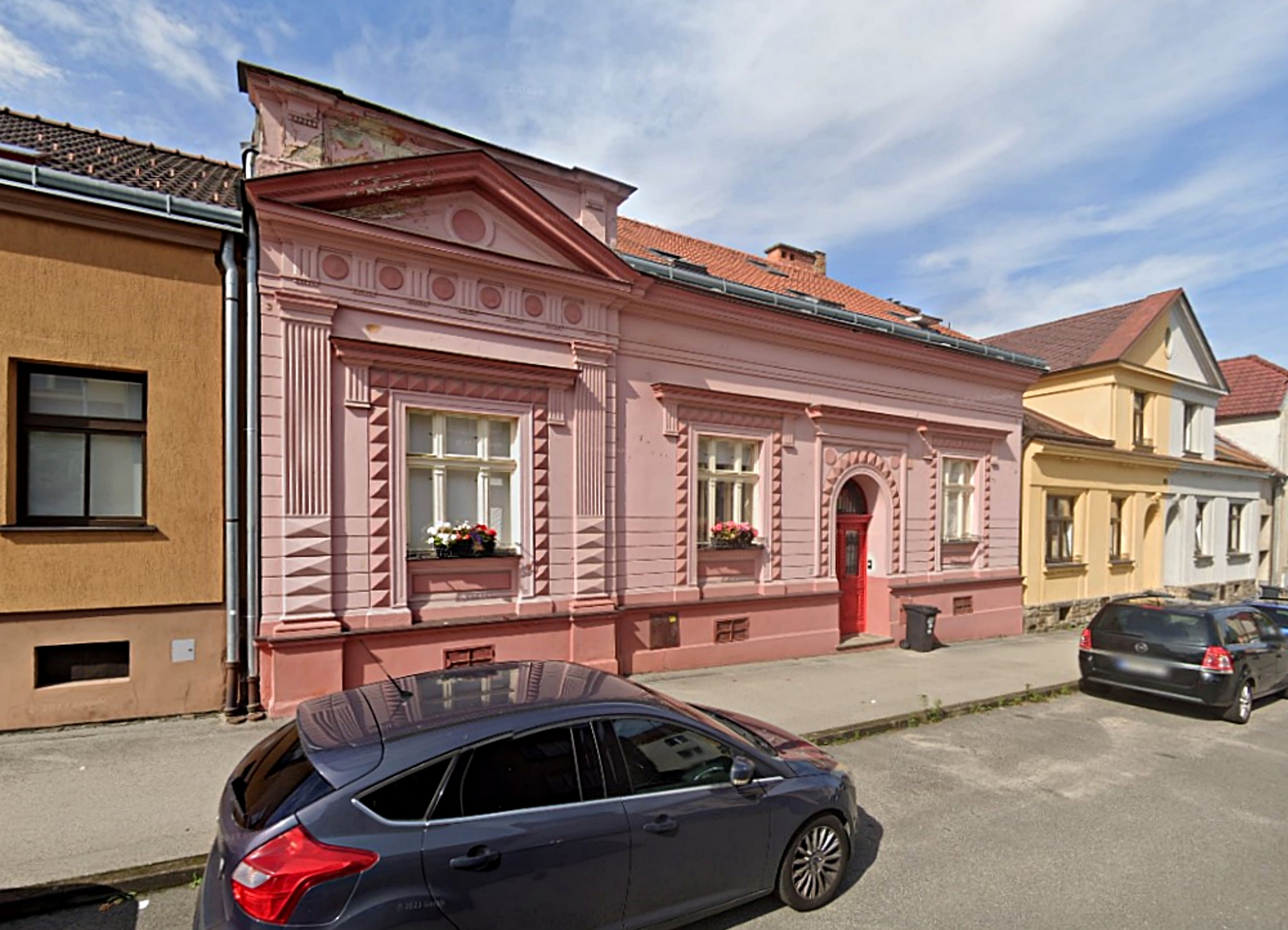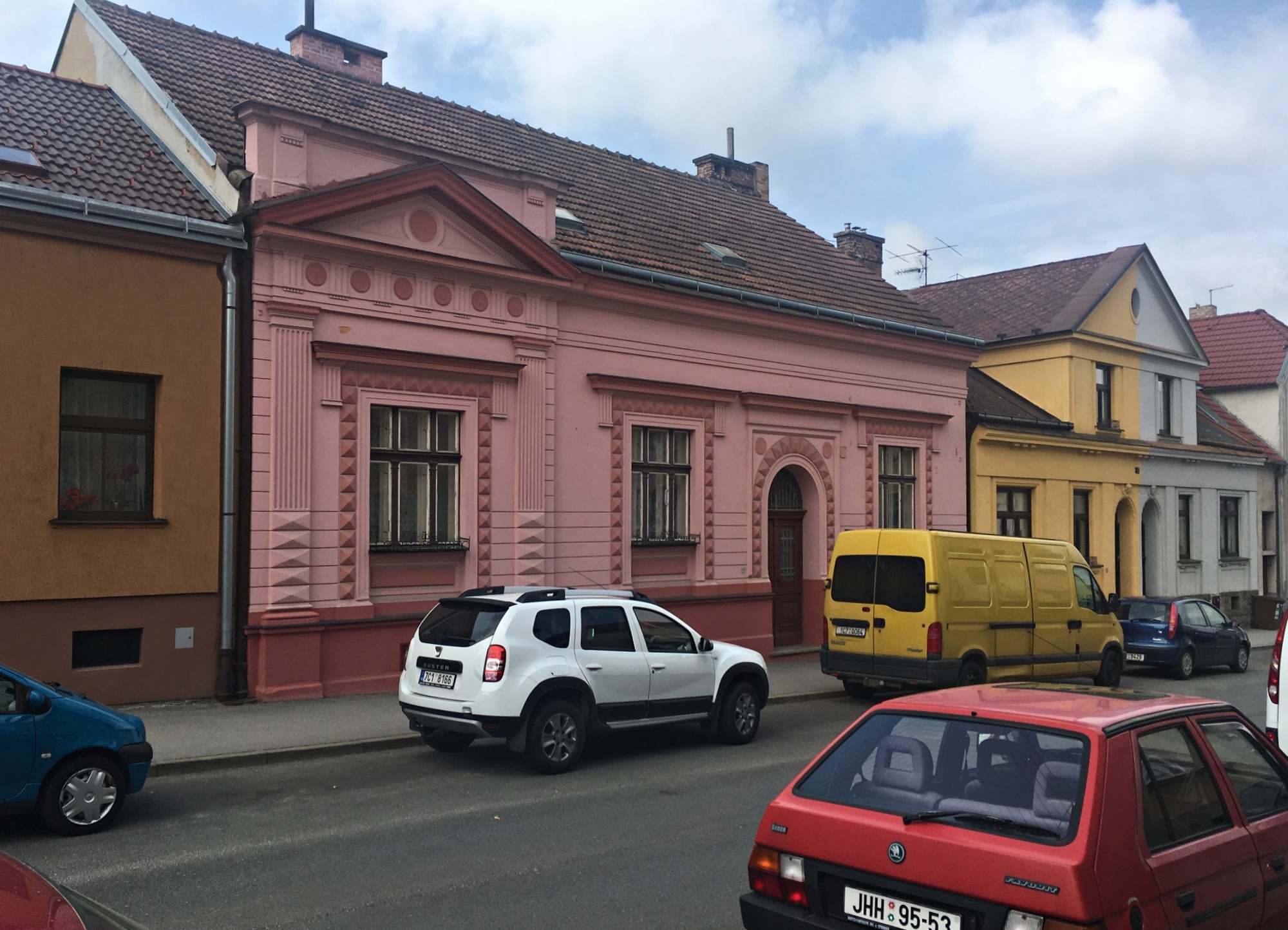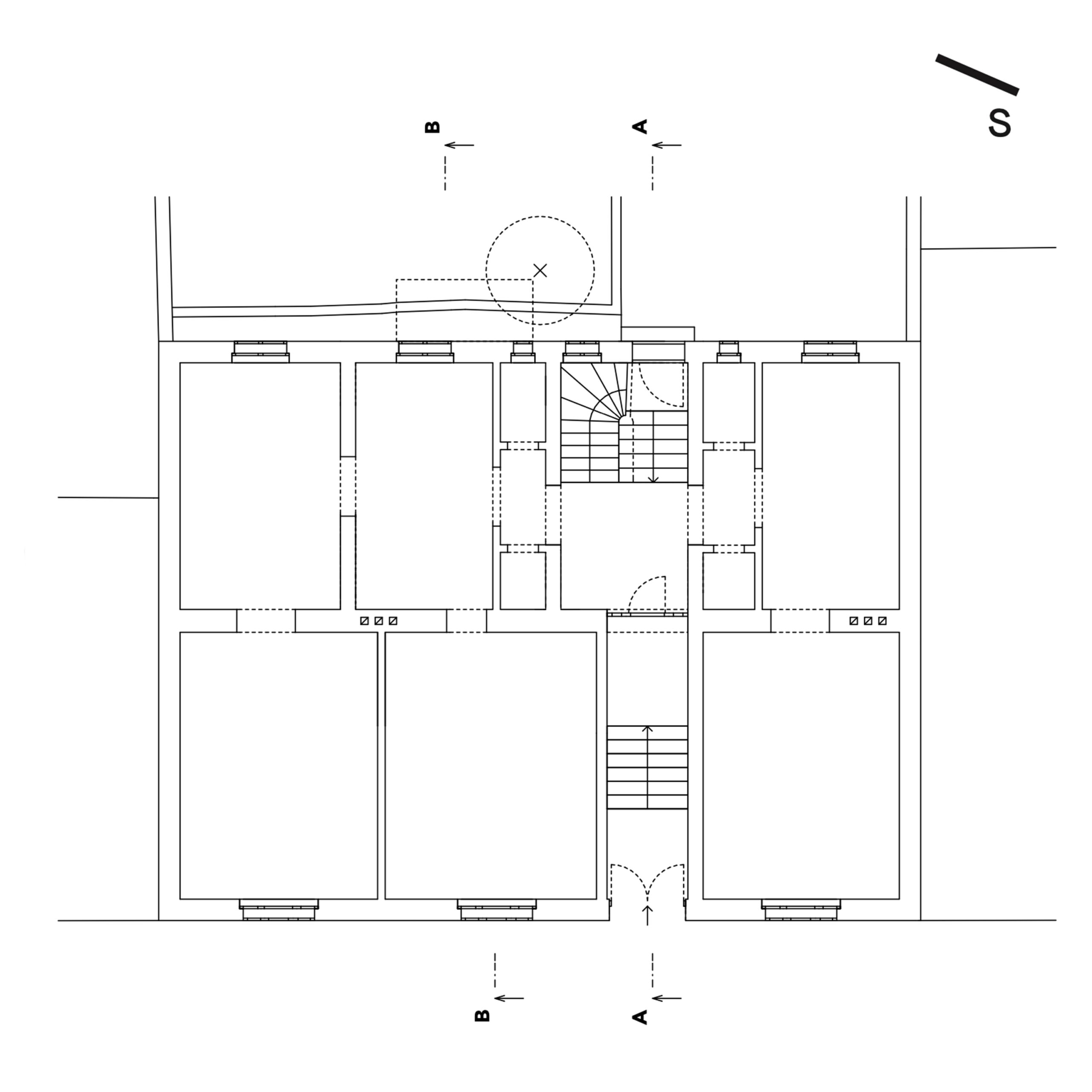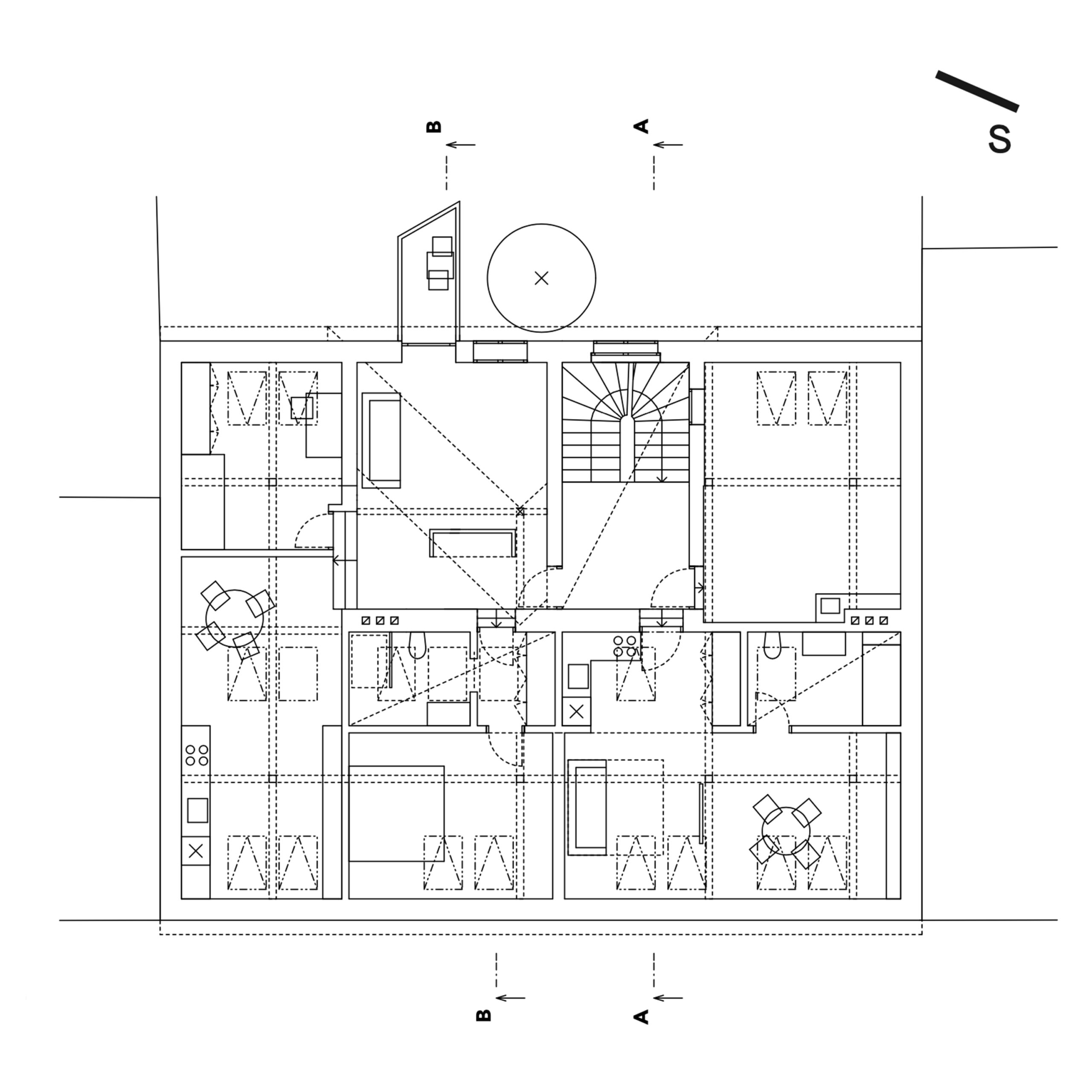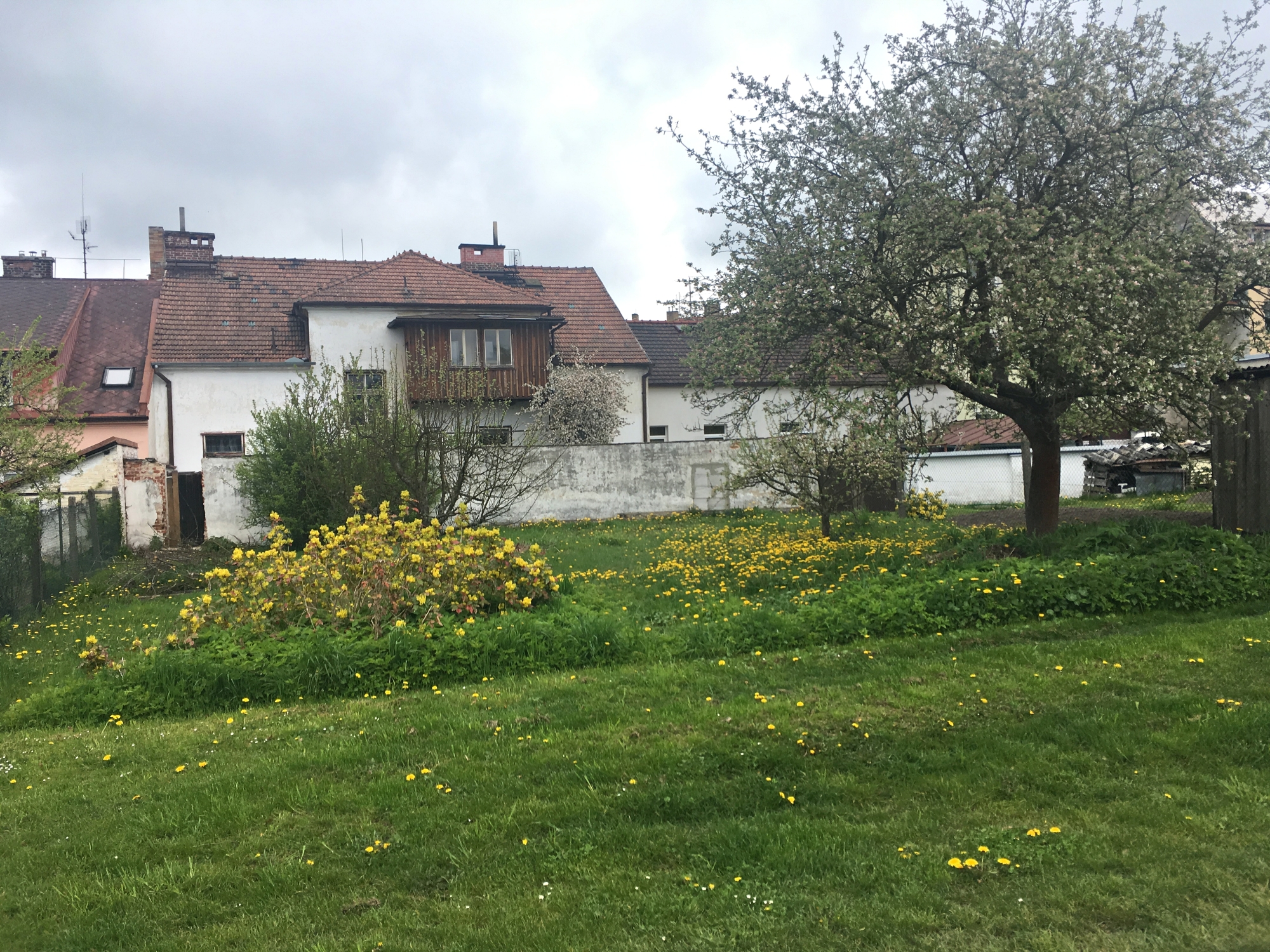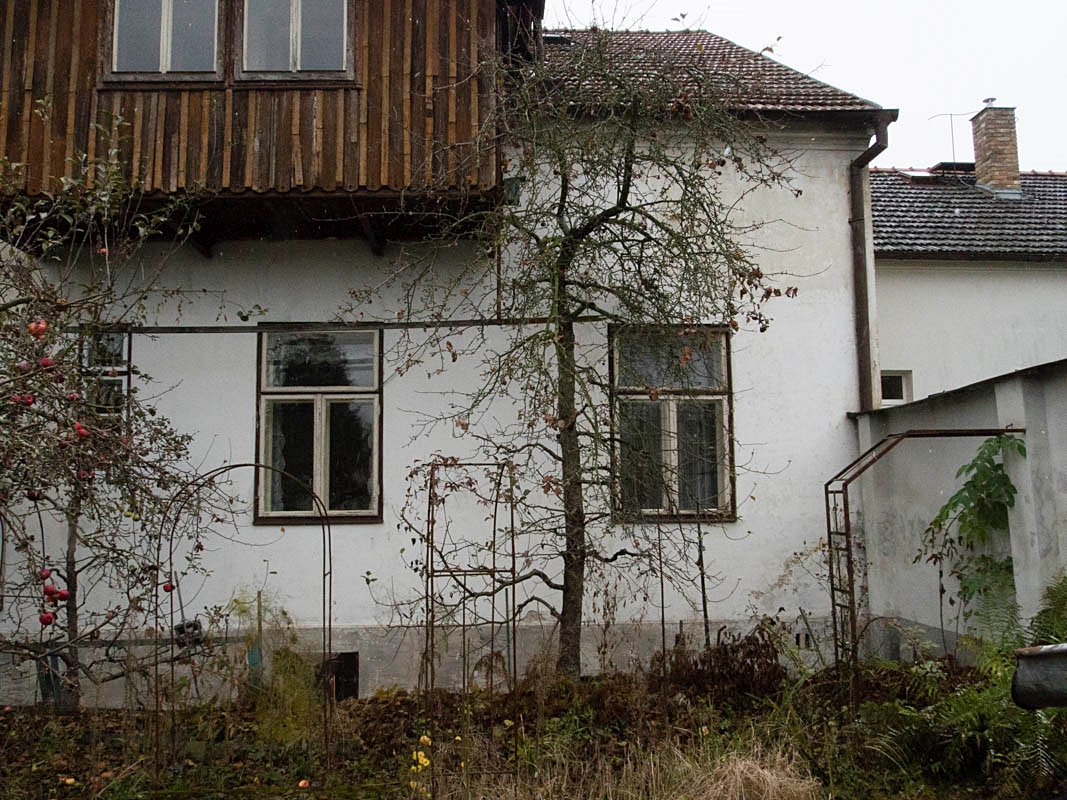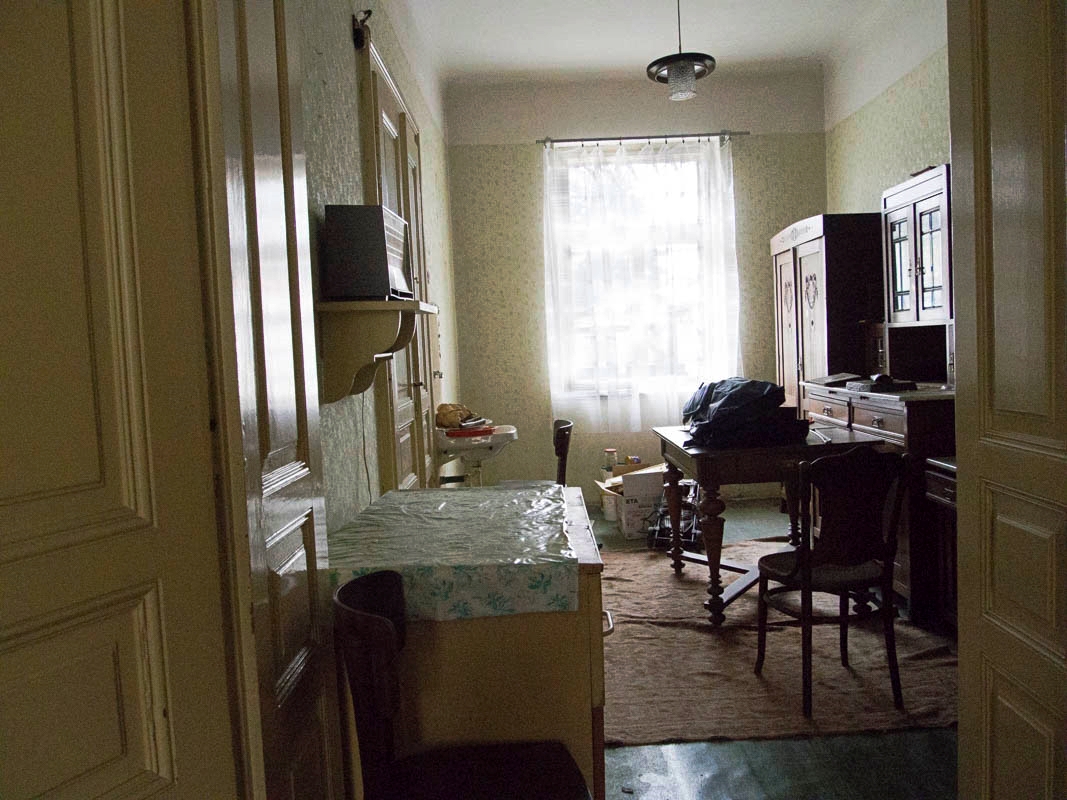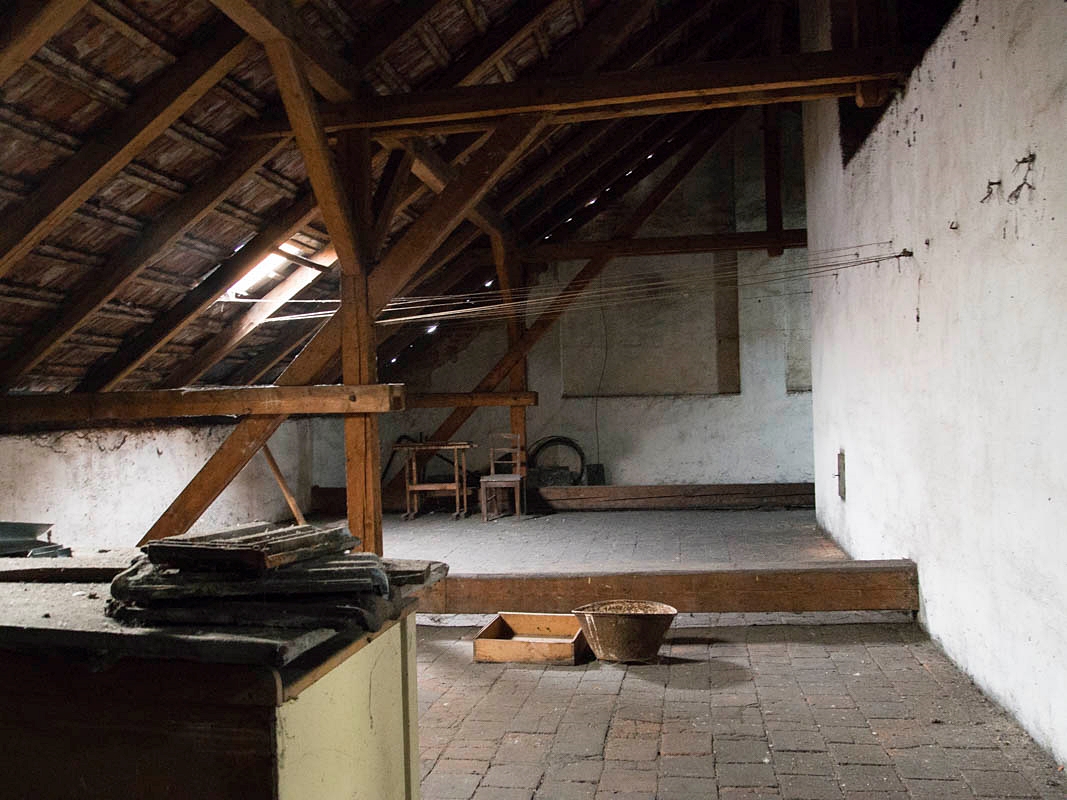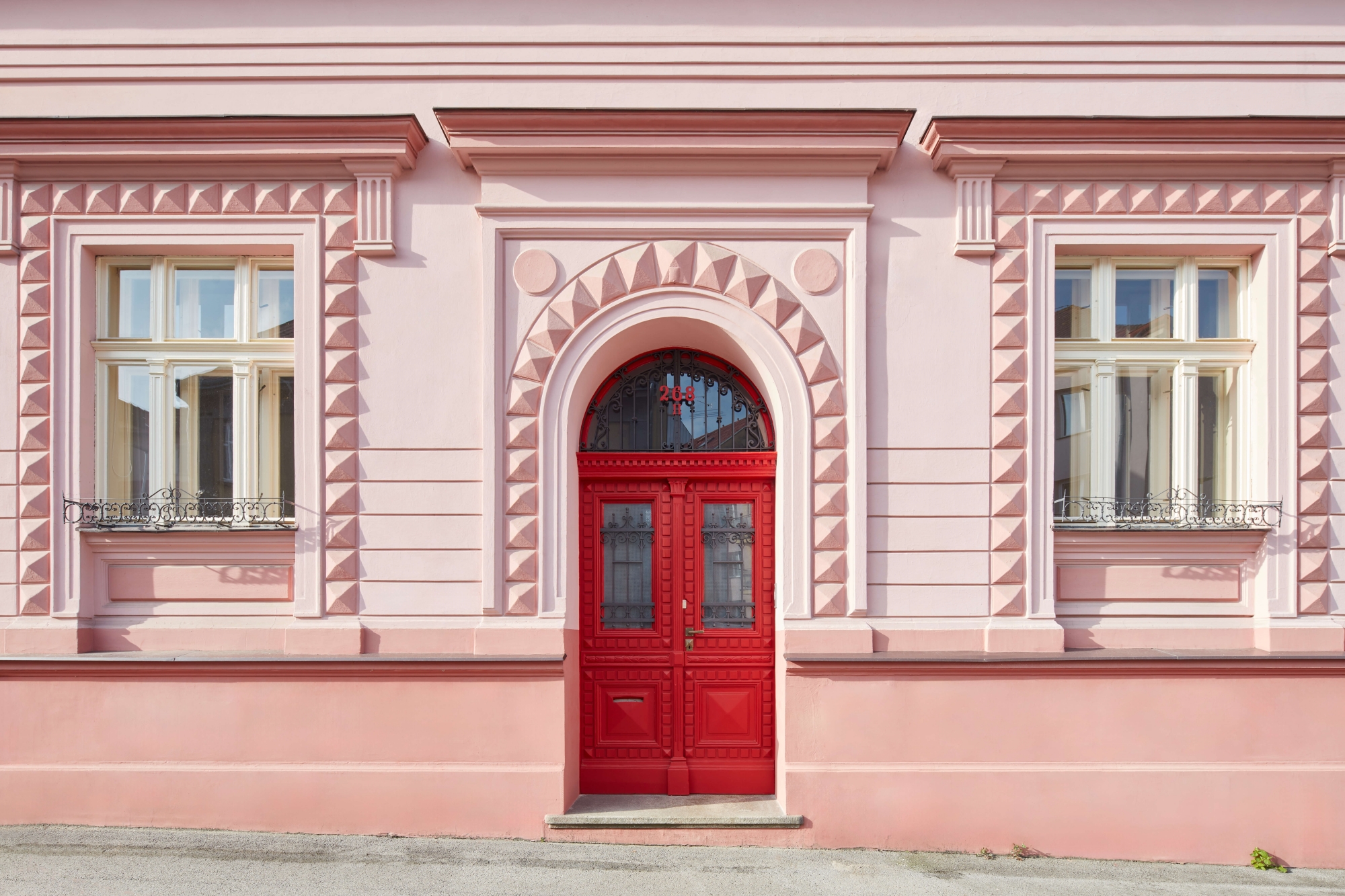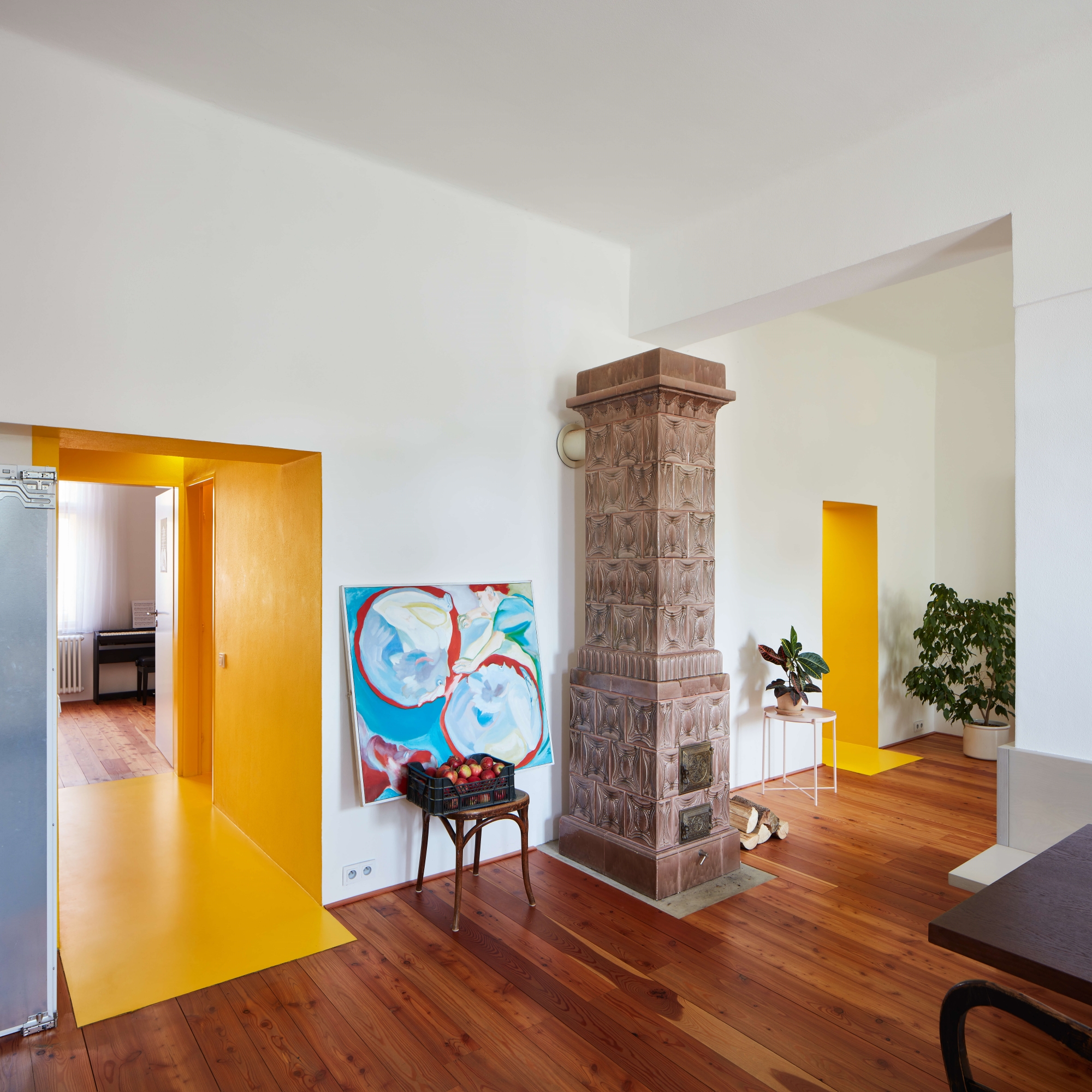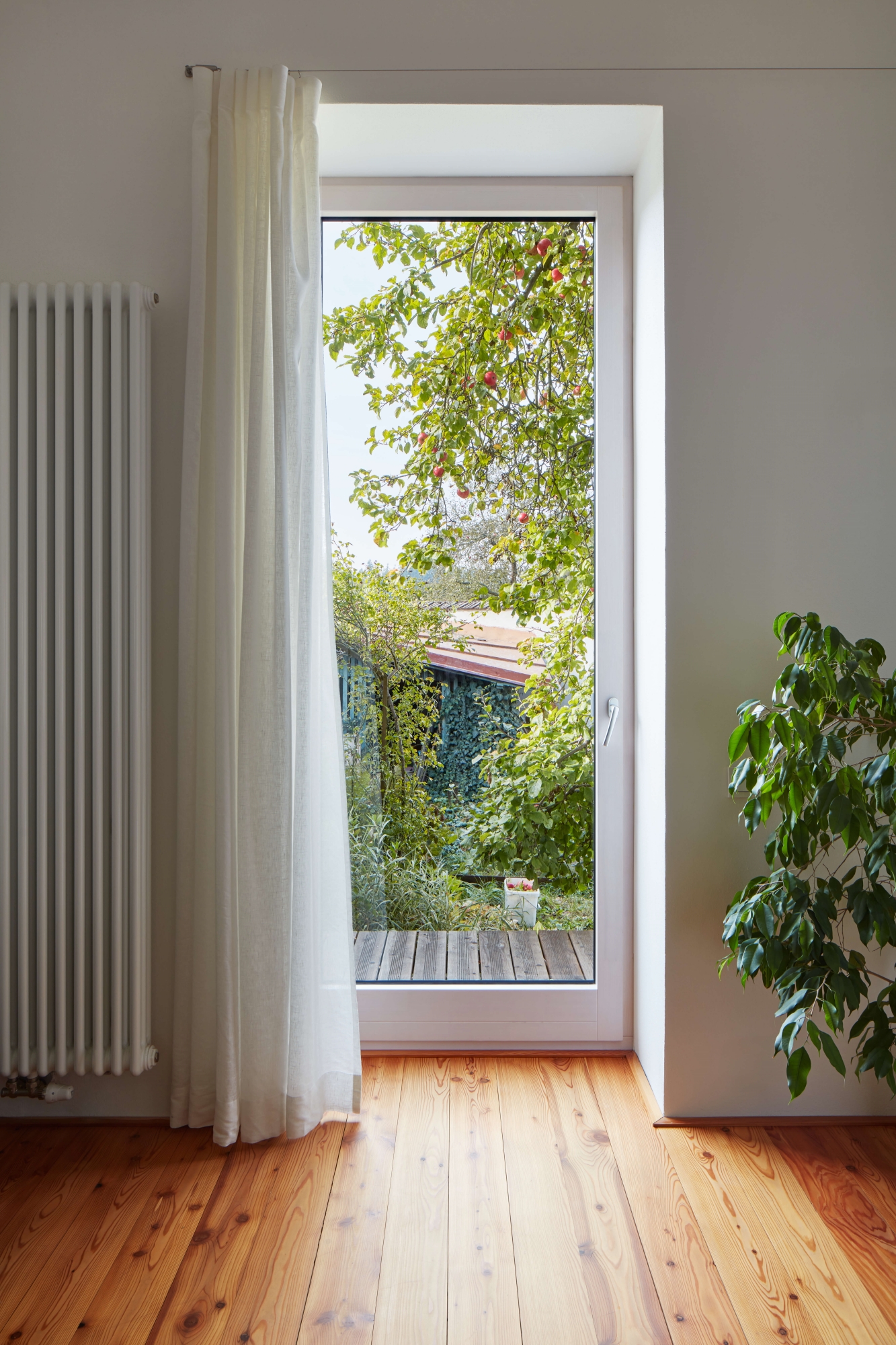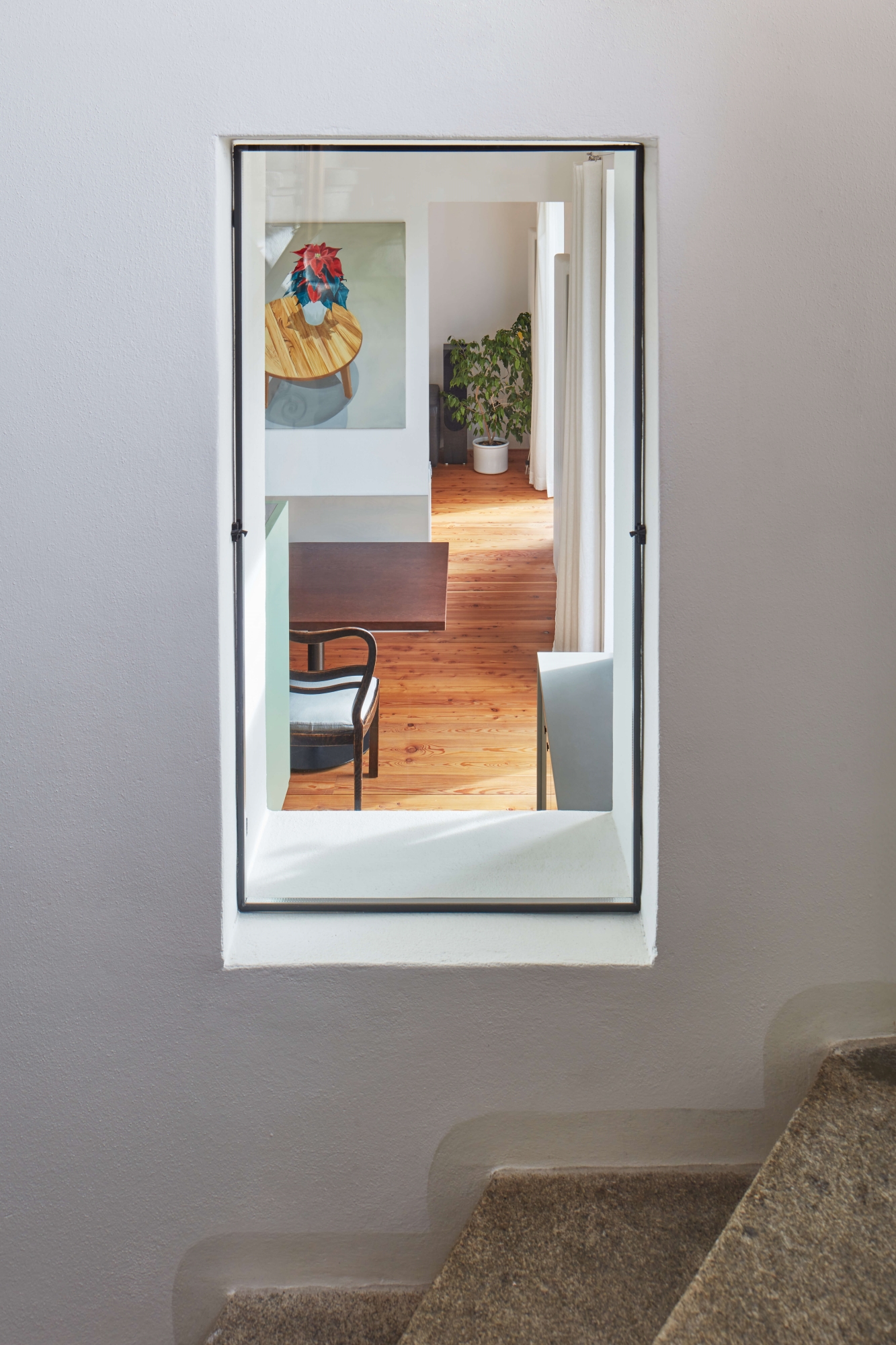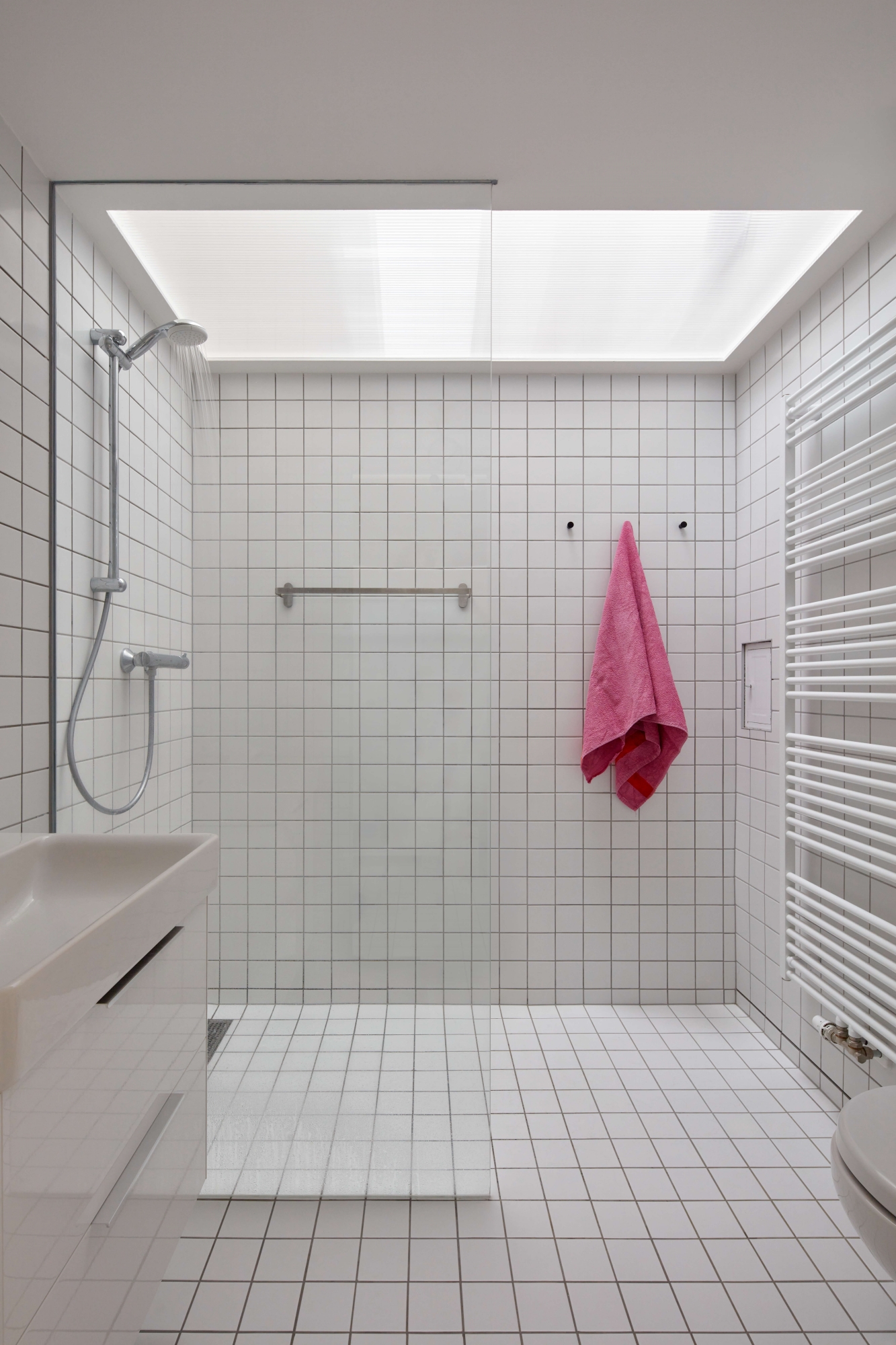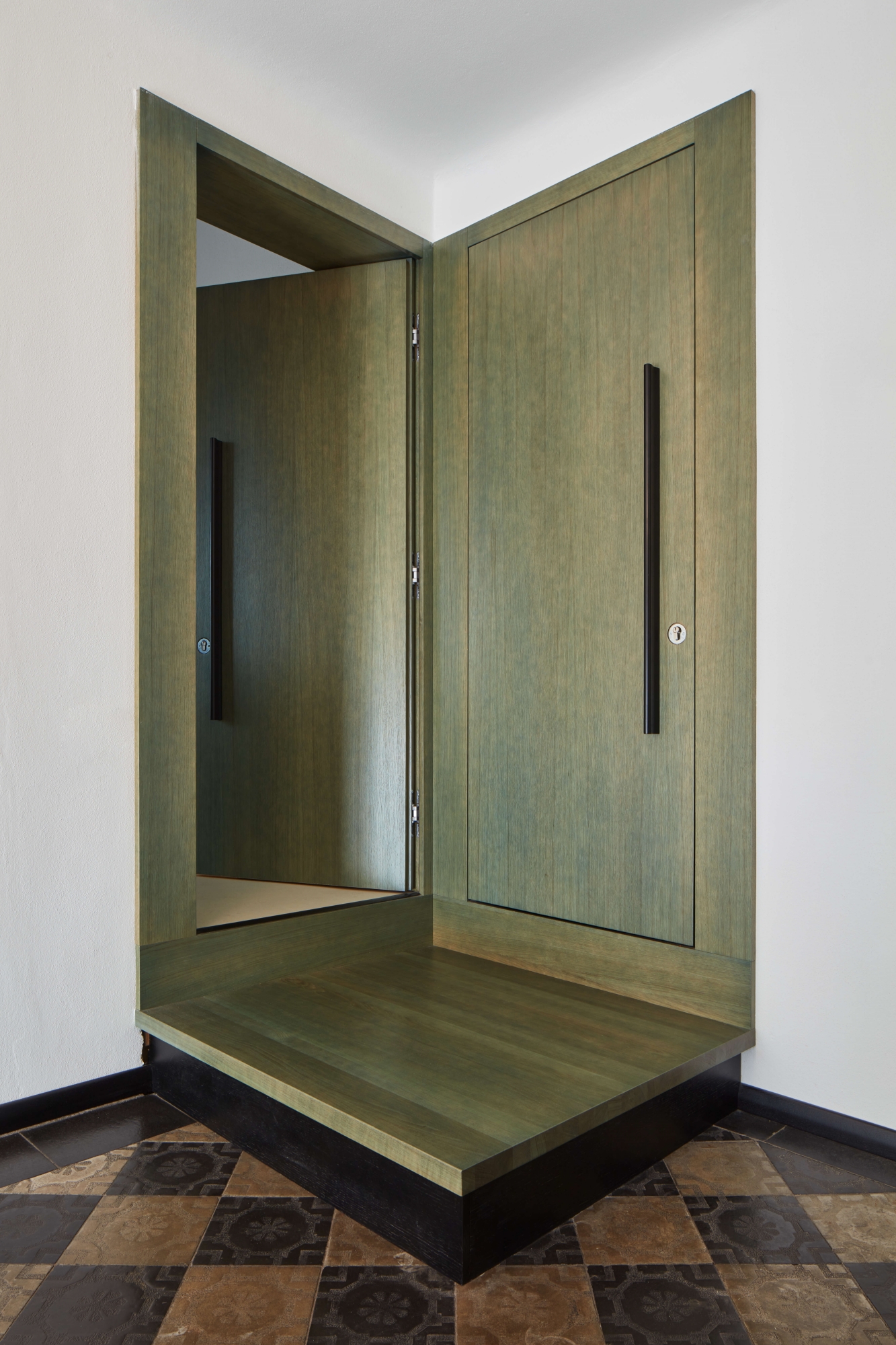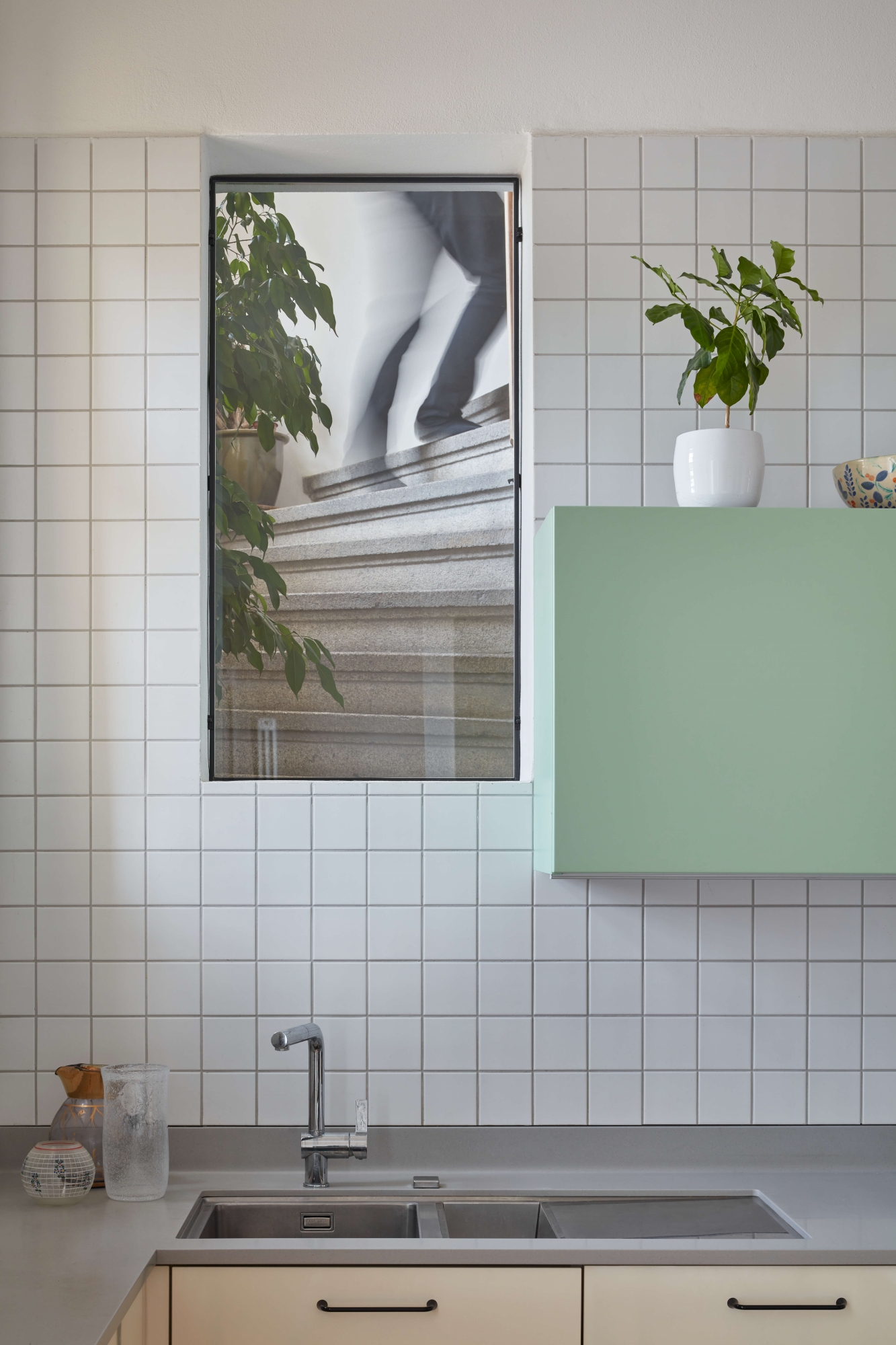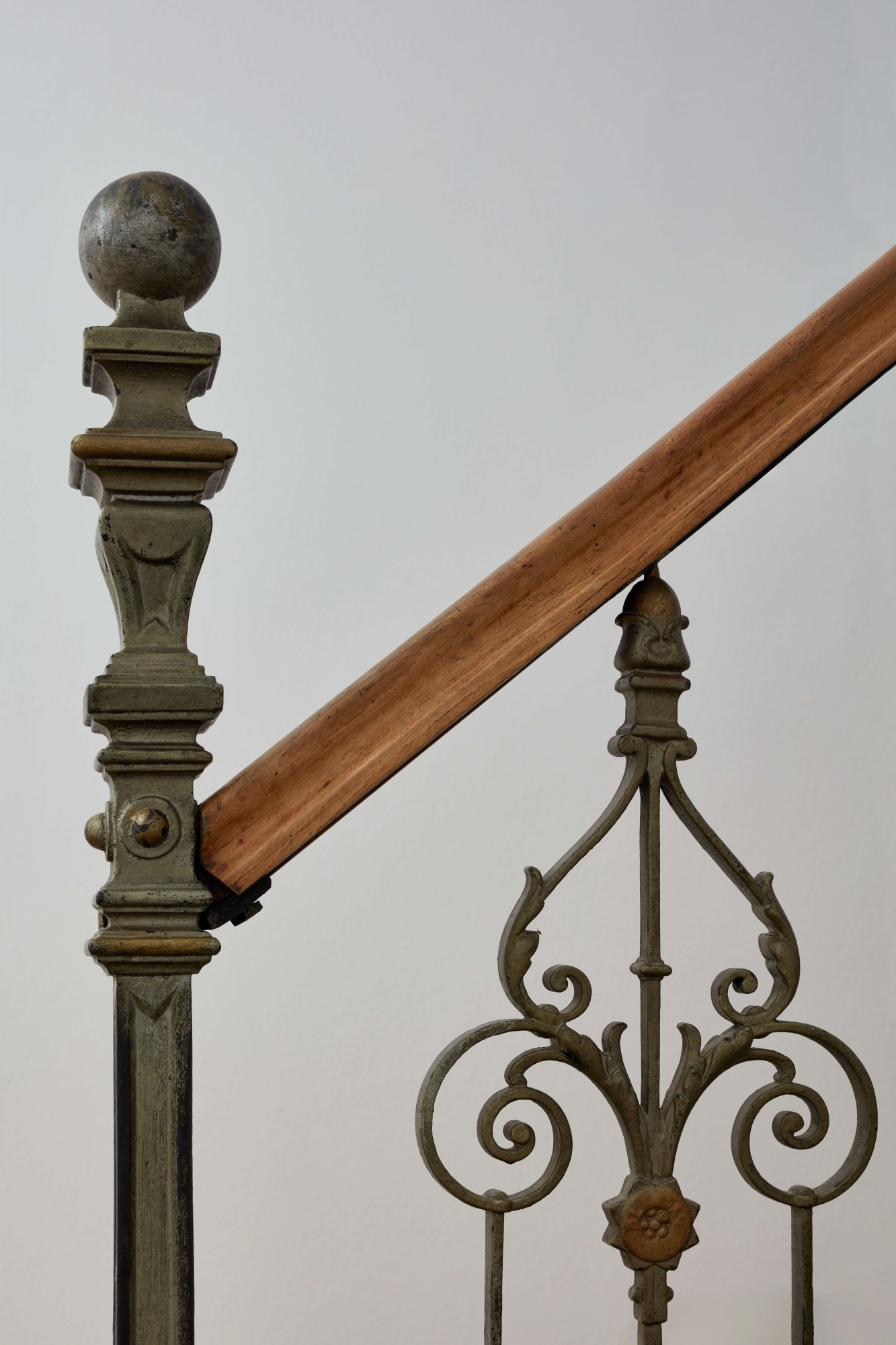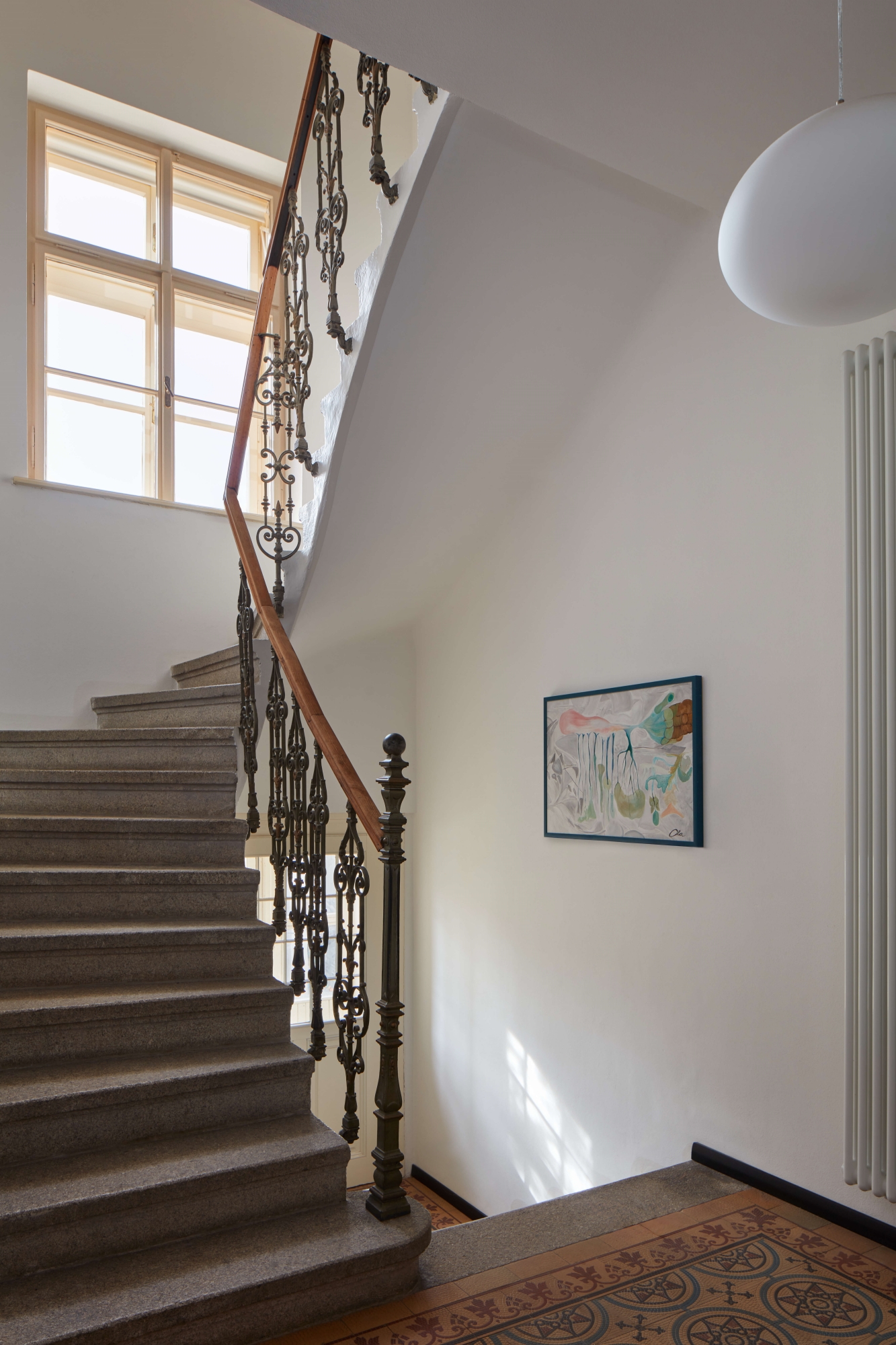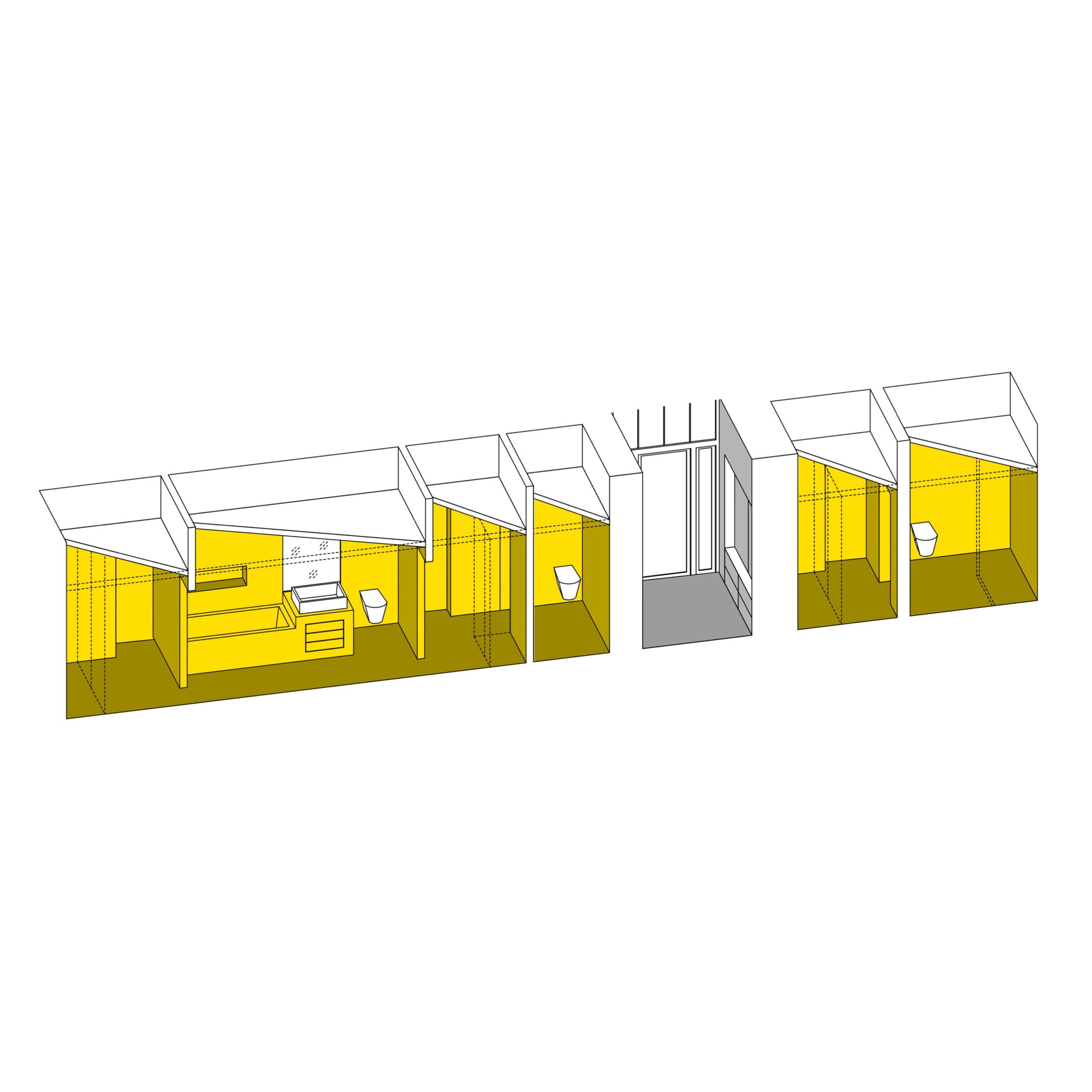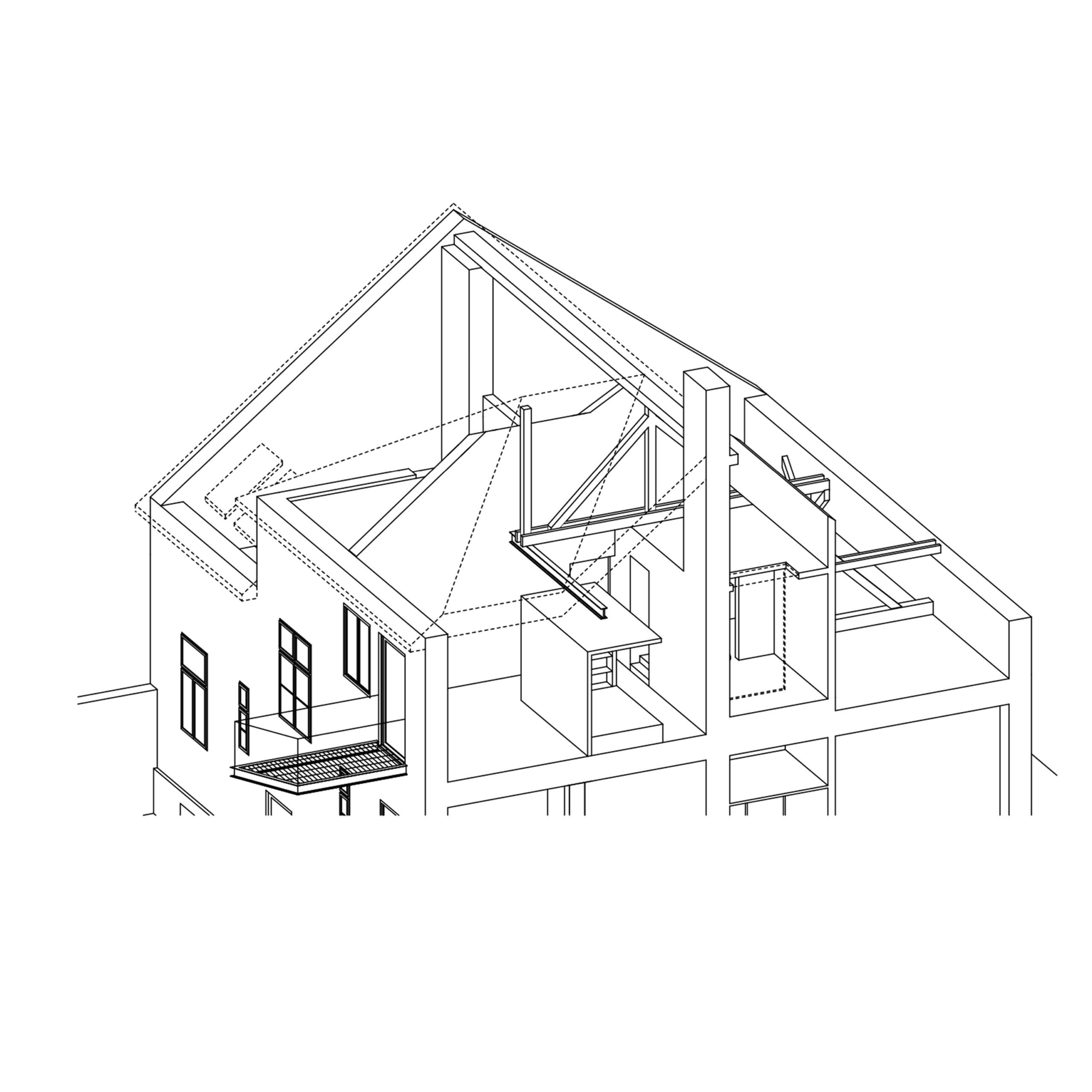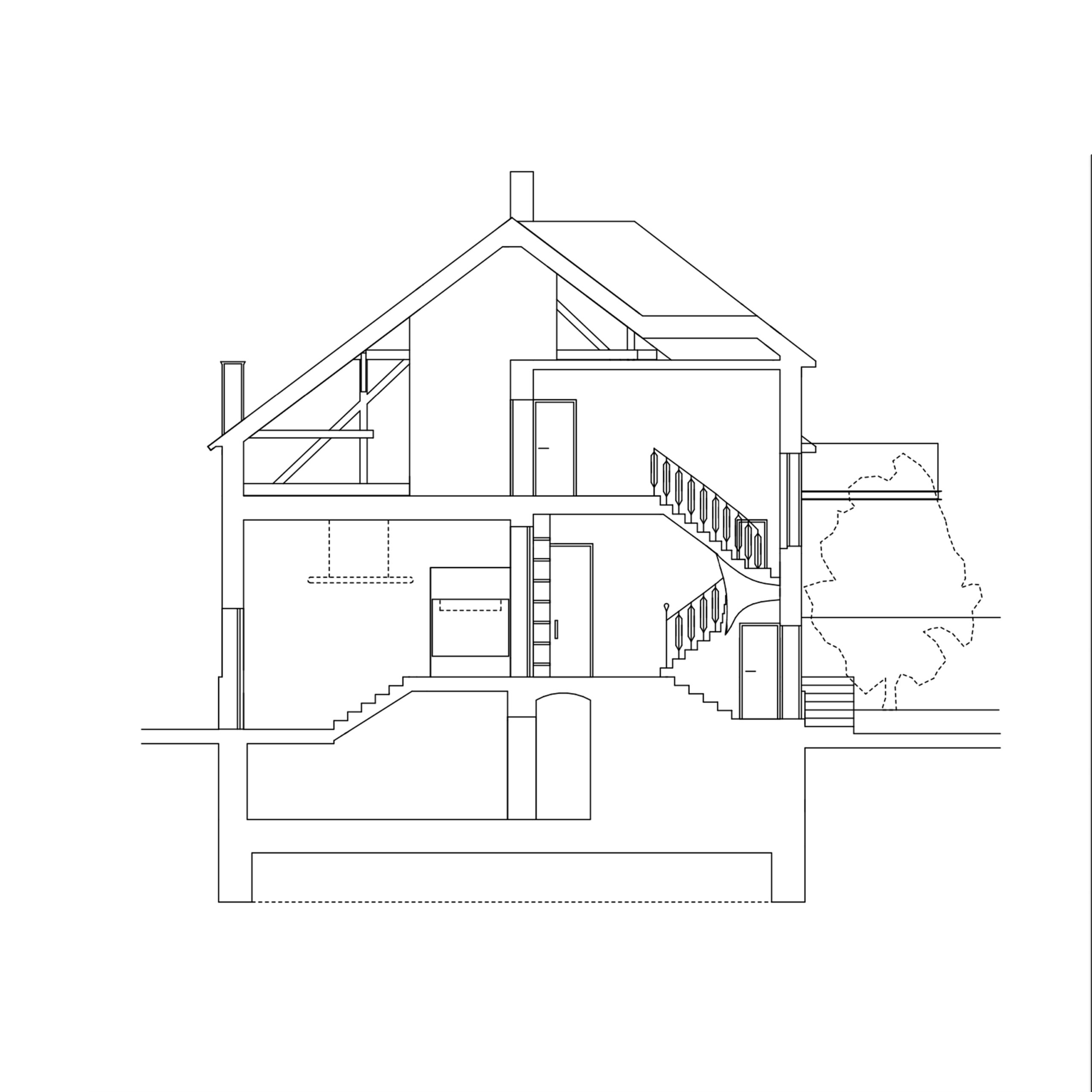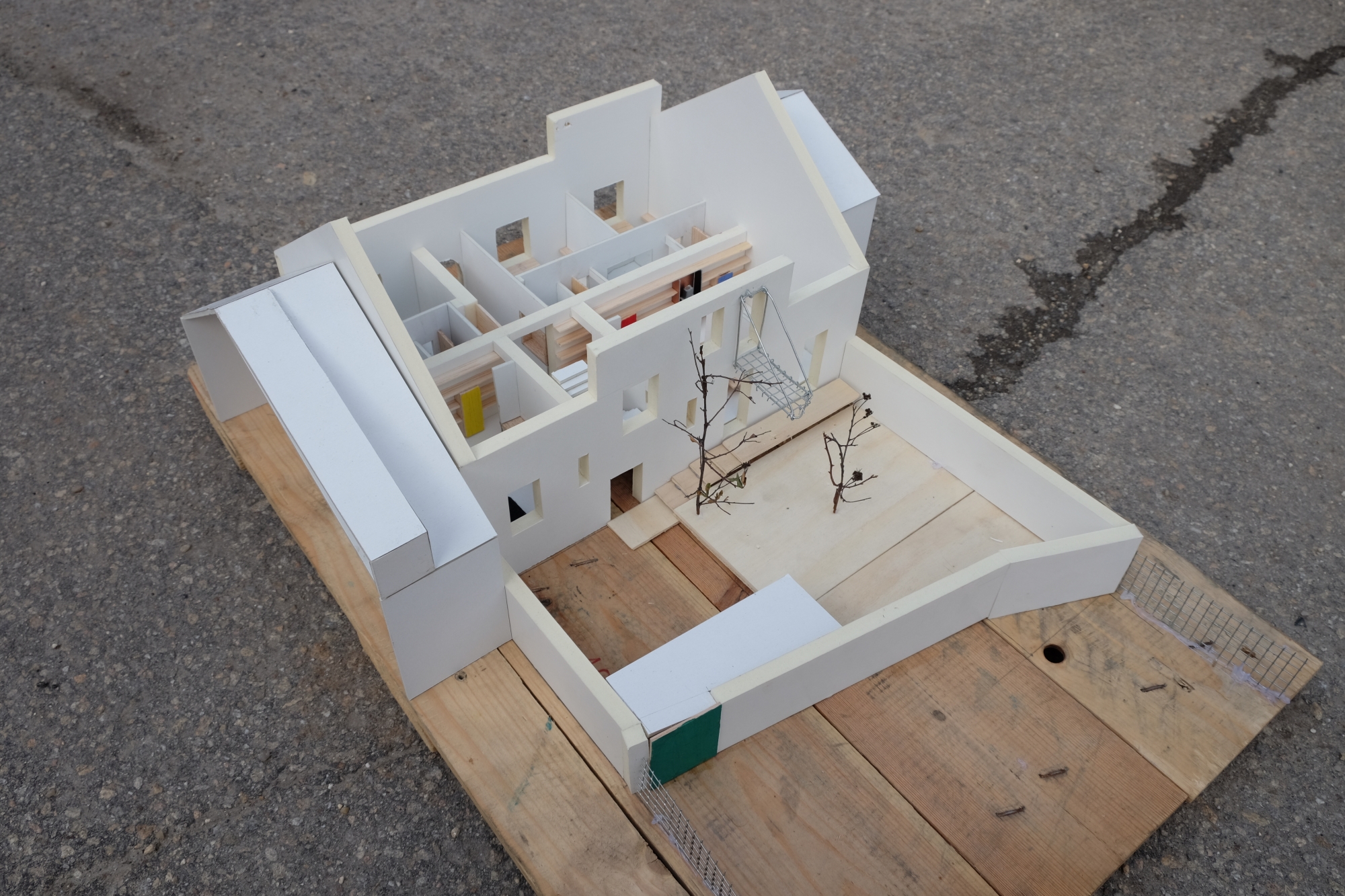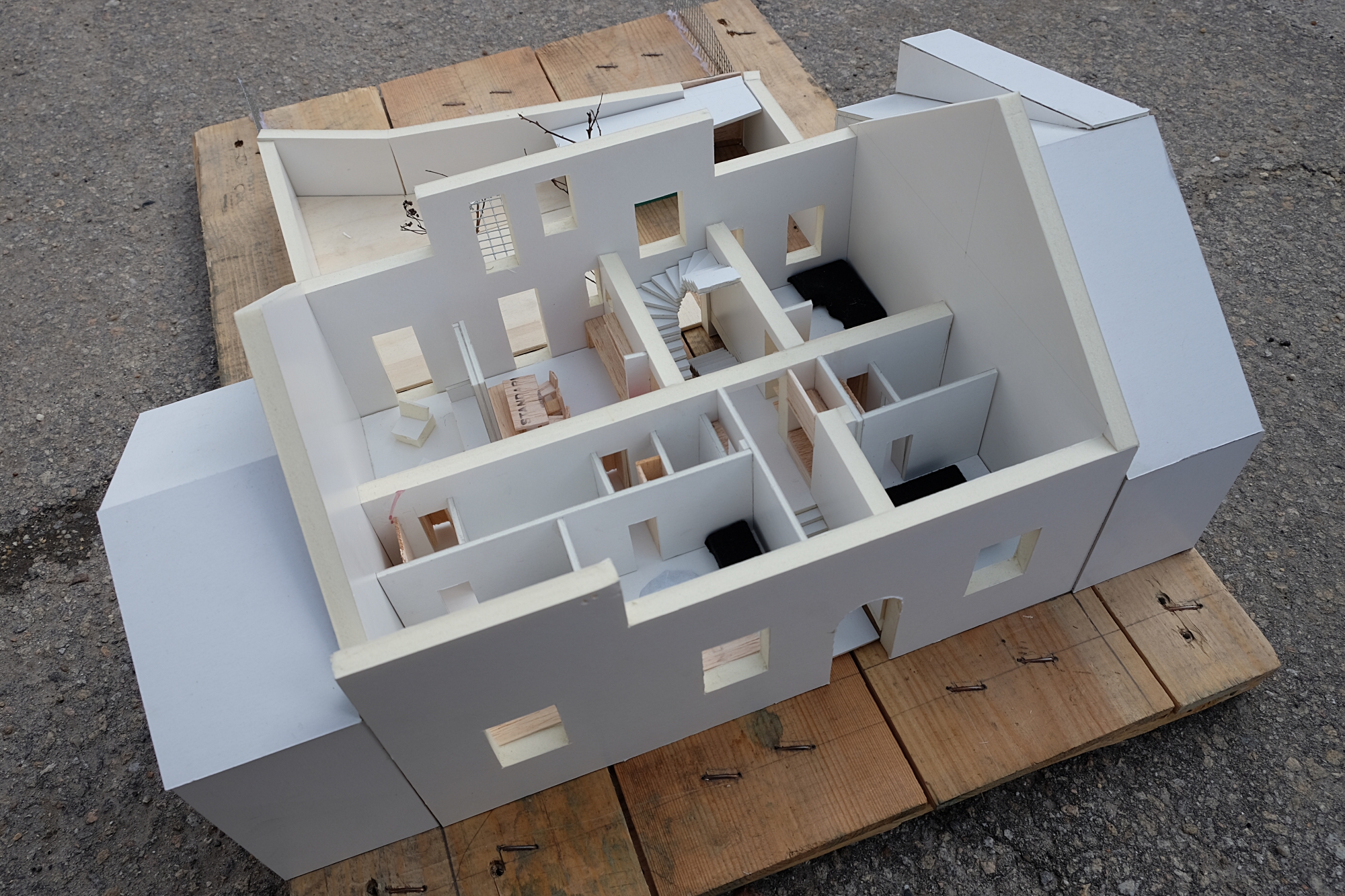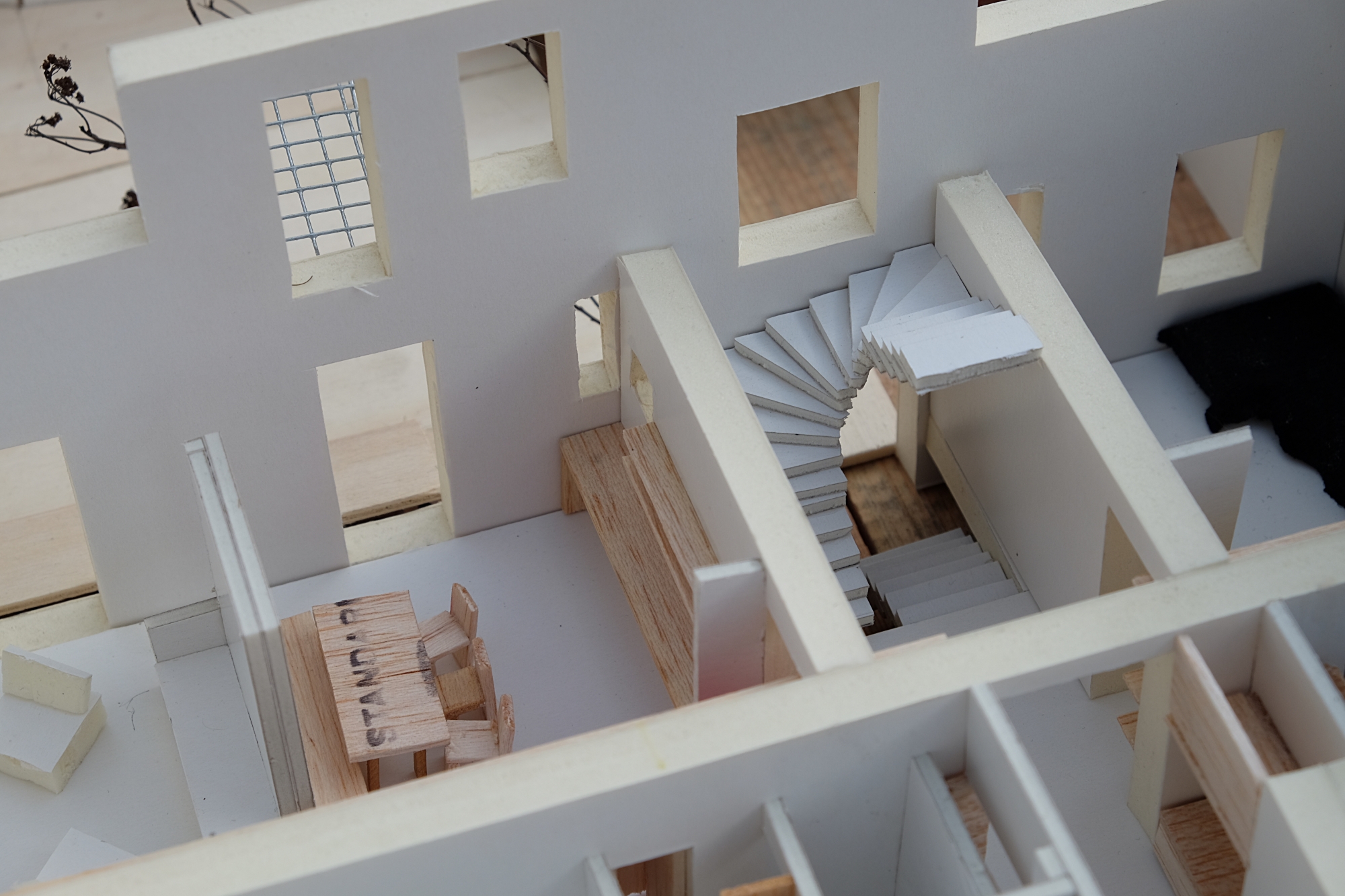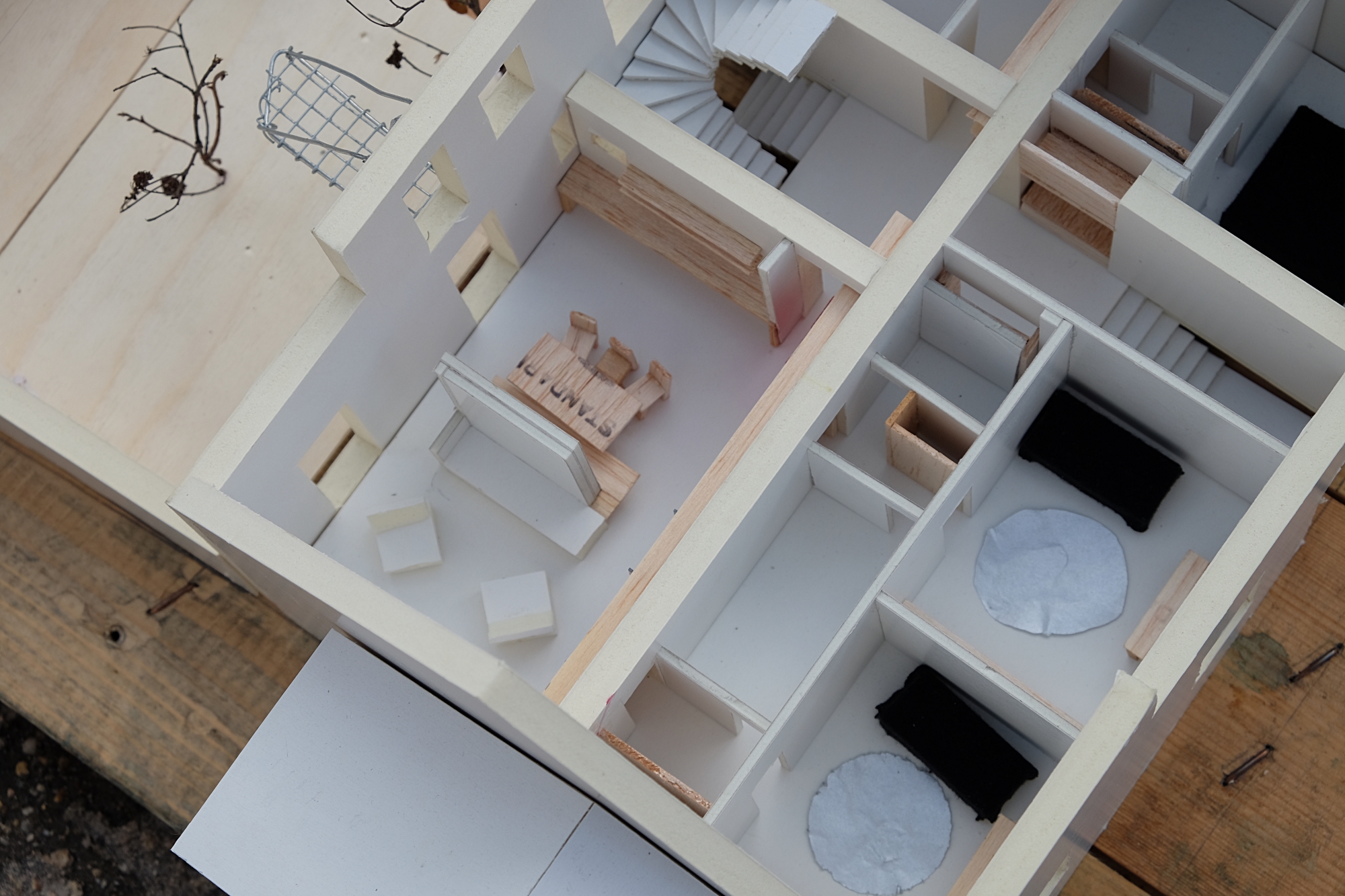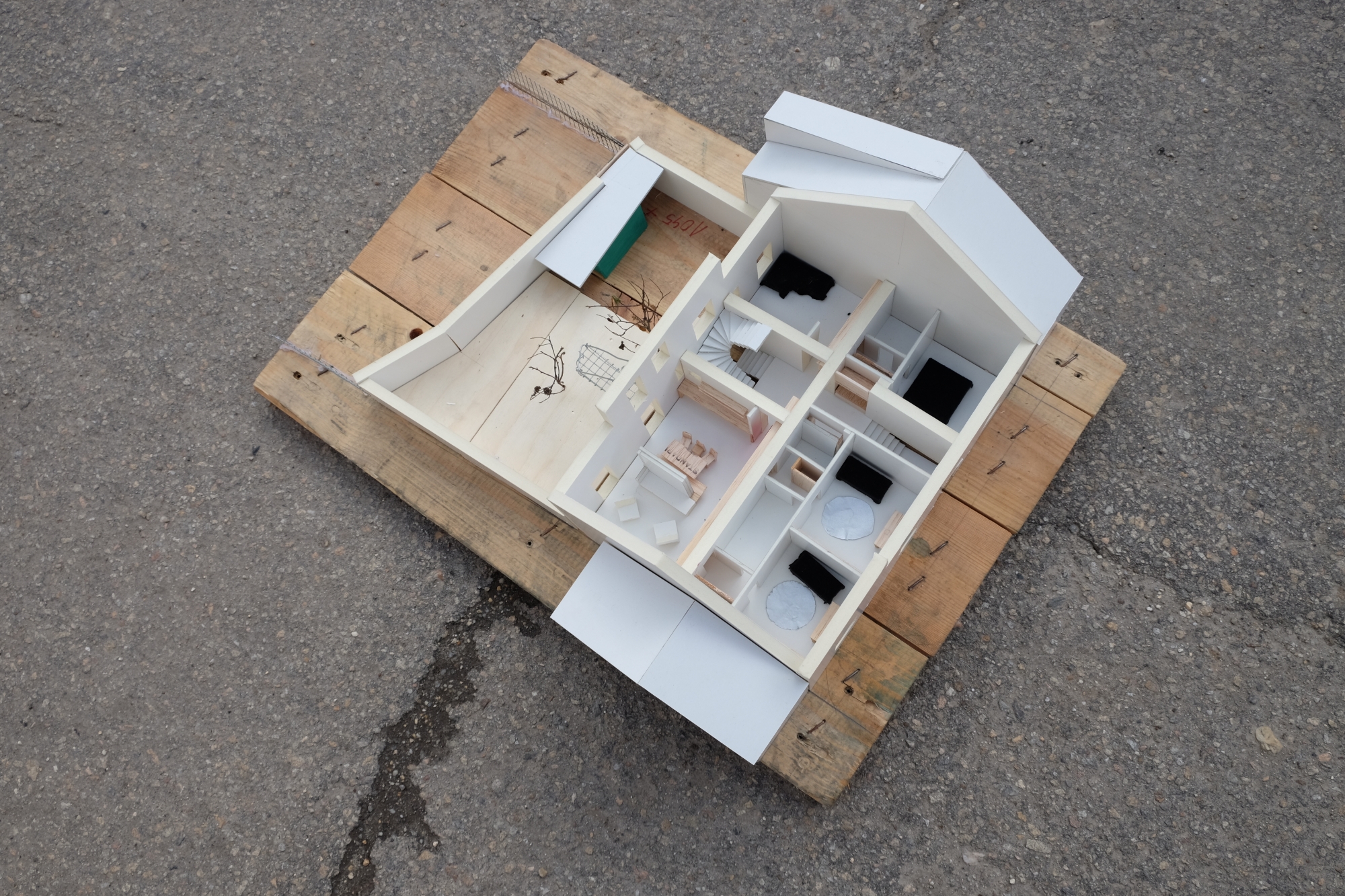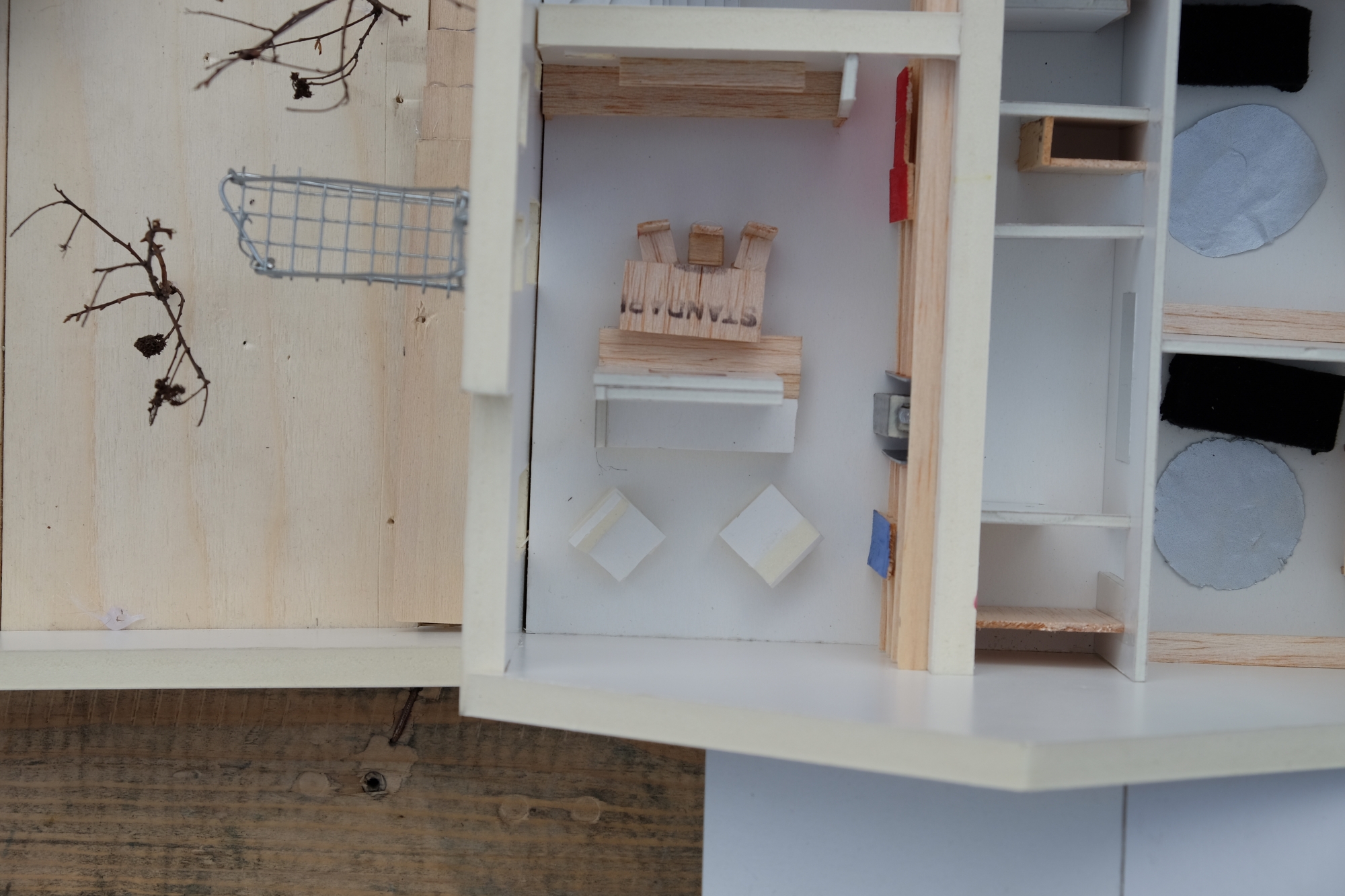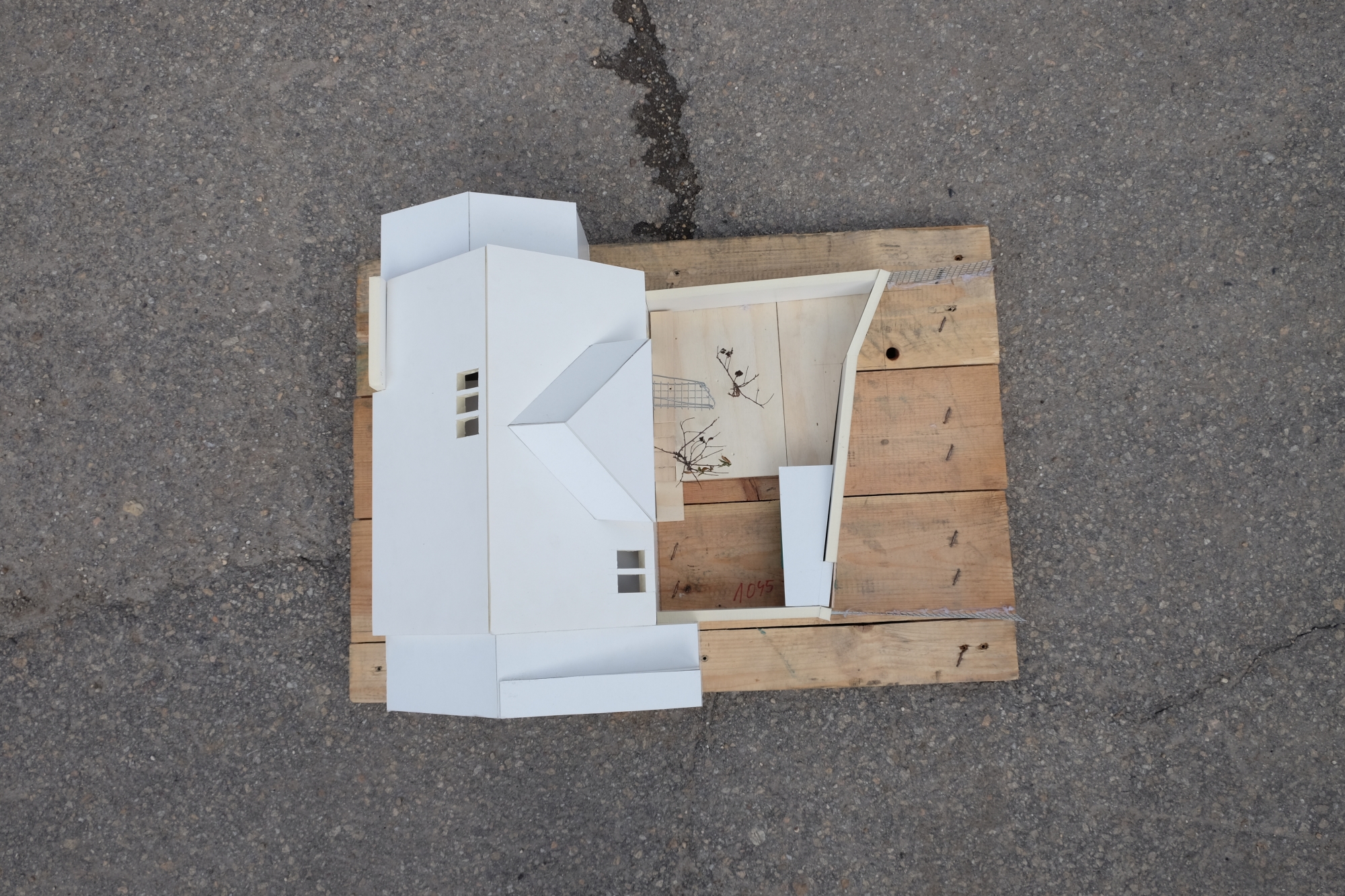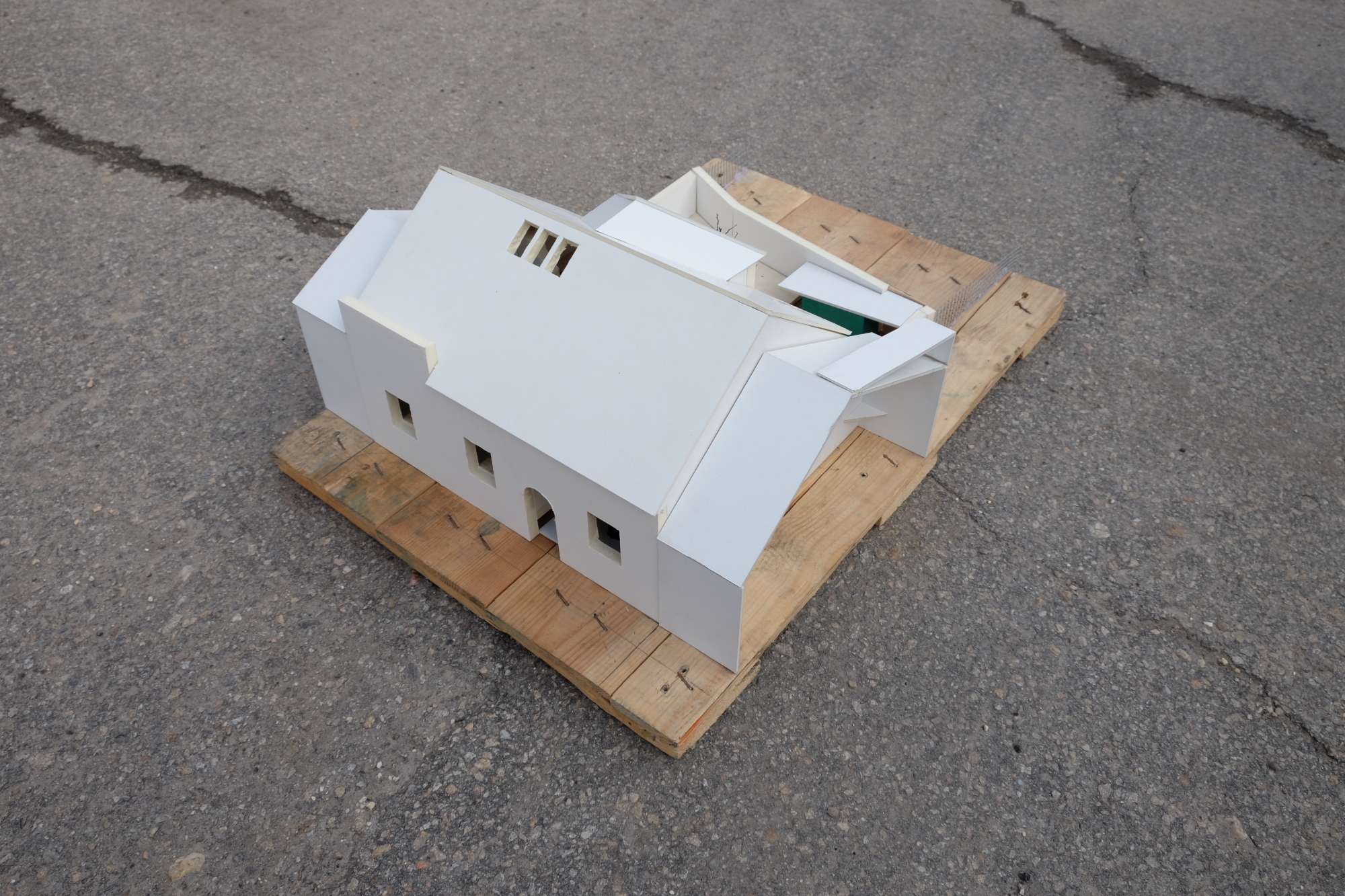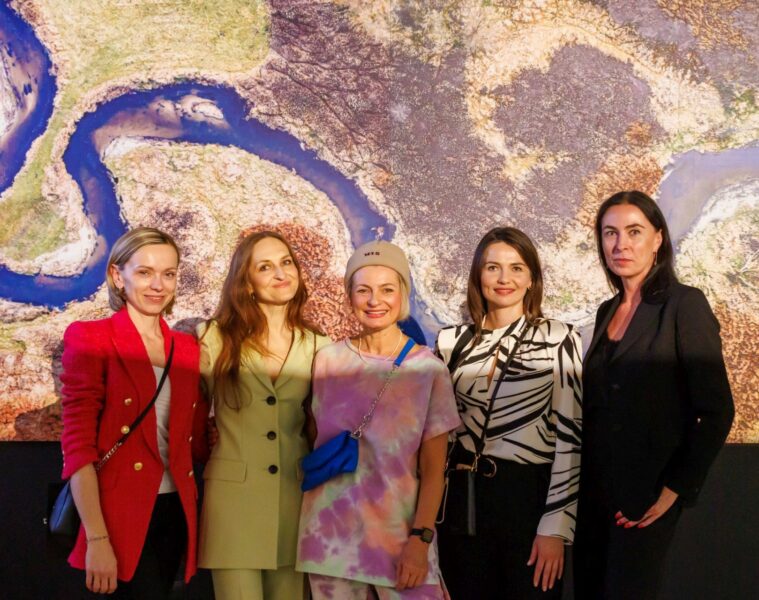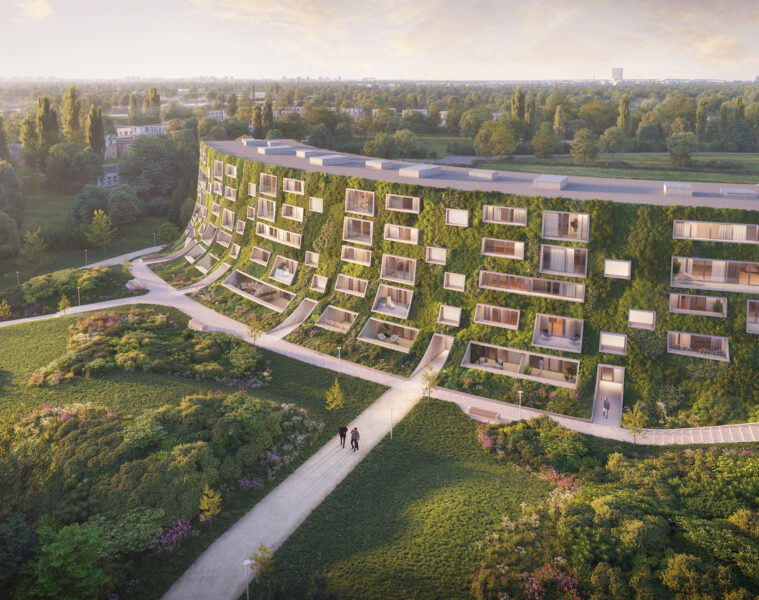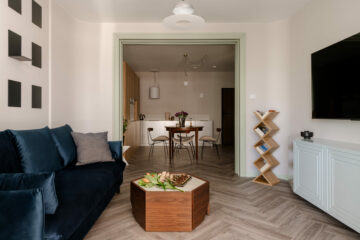The terraced house was built in 1911 in the historicist style for the family of a local pharmacist. It was characterised by high-quality materials, finely crafted details, considerable space and spacious interiors. After more than a century, however, the house no longer met the owners’ requirements. The family of five needed different spatial solutions to those used a century ago. The challenge for architects Matěj Šebek and Martin Petřík was to find harmony and balance between the new and the old. The house, which is more than a century old, had to accommodate two flats that could be further transformed and subdivided in the future.
The architects decided not to change the character of the house, but their idea to accentuate the modernity was to use a bright yellow core of bathrooms and dressing rooms on the ground floor, which were very much missing from the original layout of the house. The ground floor, separated by a hallway with a striking staircase, was connected by new openings along the resulting core. The view is defined by the horizontal lines of the spacious library. Through it, one passes into the night area of the house – the core here acting as a filter. The entire main living space is oriented towards the garden elevation and the western sun. Its centrepiece has become a massive pillar, once a wall, surrounded by seating areas and the original tiled cooker. Domestic life during the day runs between the living room and the kitchen and dining room. The staircase that once divided the house now connects it. A narrow window from the kitchen overlooks the hall and the attic studio.
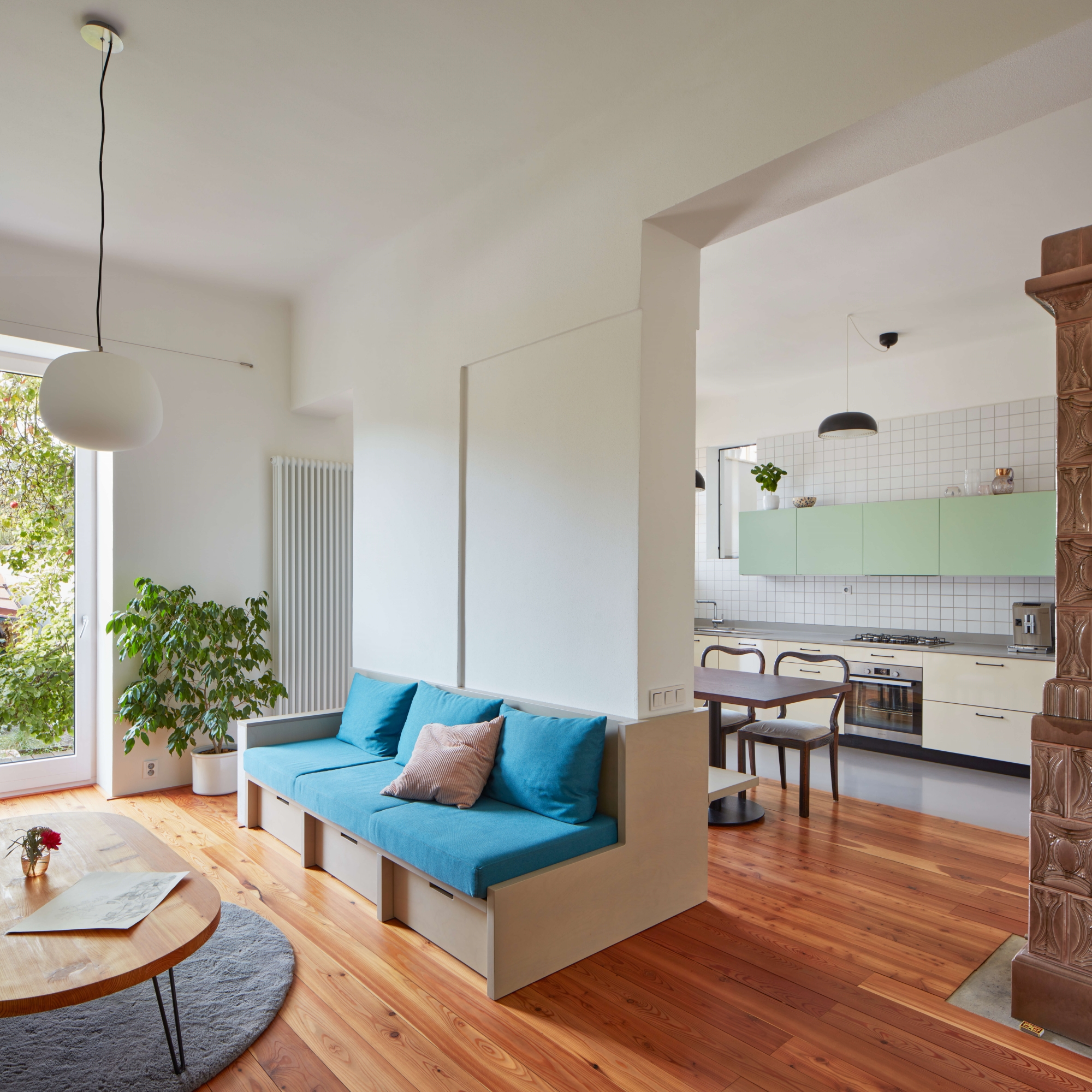
The rear elevation was opened up to the garden by enlarging the window and door openings. Clear, all-glass surfaces in simple aluminium frames highlight the new or enlarged openings, contrasting with the historic woodwork with traditional divisions, which has retained its former dimensions and character. The intimate garden is laid out in a storied manner. A wooden walkway runs along the length of the house, which is connected by steps to the lowest level of the brick patio. The original wooden porch of the garden façade has been replaced by a light walkway, which offers a unique view of the nearby former Franciscan monastery.
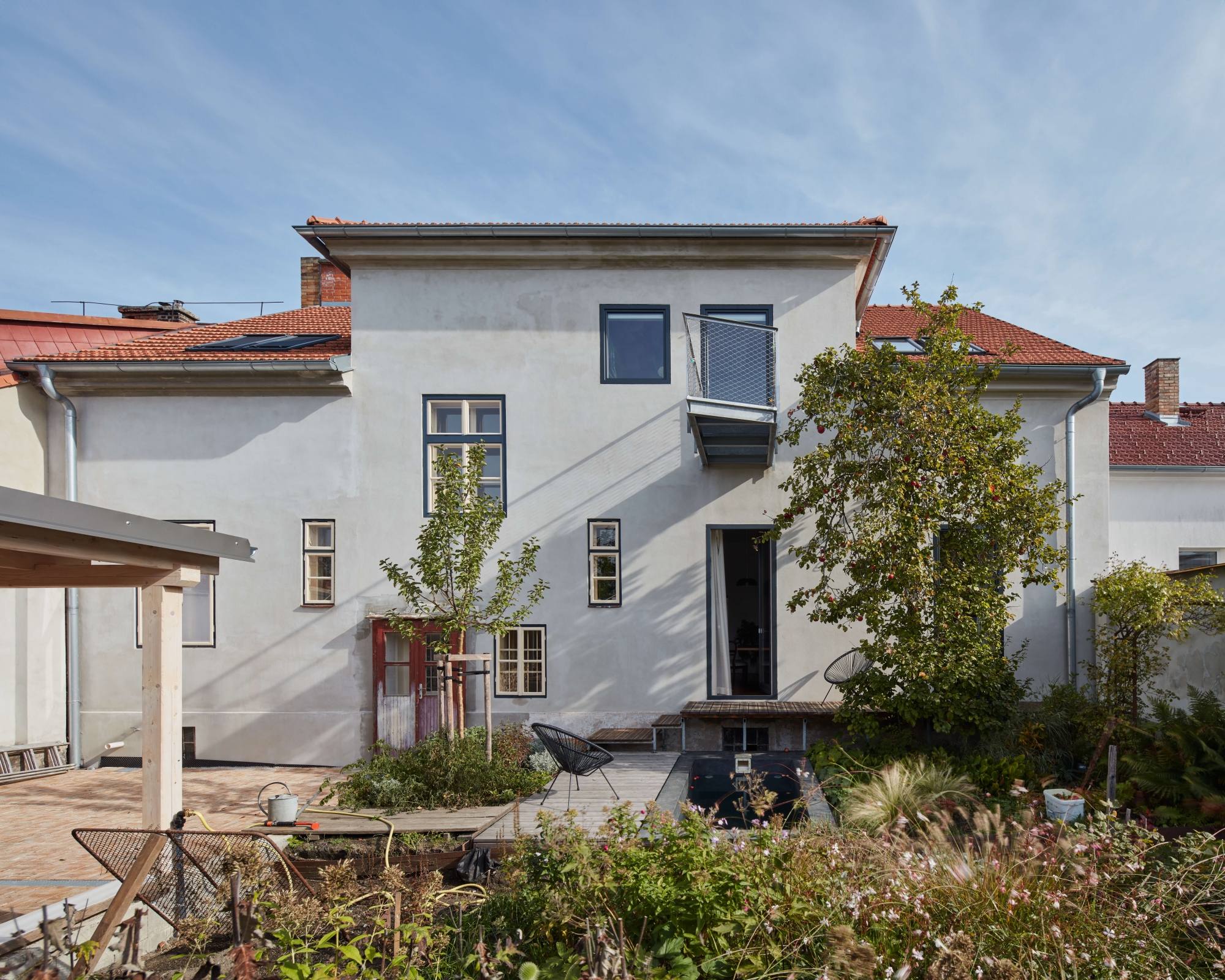
A completely new space was arranged in the previously unused attic, which opens up to the full height of the ridge, emphasising the shape of the original chimney. The attic has been divided into two flats – a studio and a two-room flat. Floor levels adapt to the original attic structure. Highly placed skylights illuminate the entire space.
The woodwork of the façade has been restored and its colour changed. From now on, a red front door leads into the house, contrasting with the aesthetic white of the windows. The roof is covered with natural clay tiles.

authors: Matěj Šebek, Martin Petřík
completion: 2023
location: Jindřichův Hradec, Czech Republic
photography: Radek Úlehla
Read also: Single-family house | Czech Republic | Minimalism | Interiors | Interesting facts | whiteMAD on Instagram
The house before and after the remodelling. Photo by Radek Úlehla and Google Maps
House projections before and after renovation
Theme: a house that is more than 100 years old has been given new life. It combines history and modernity


